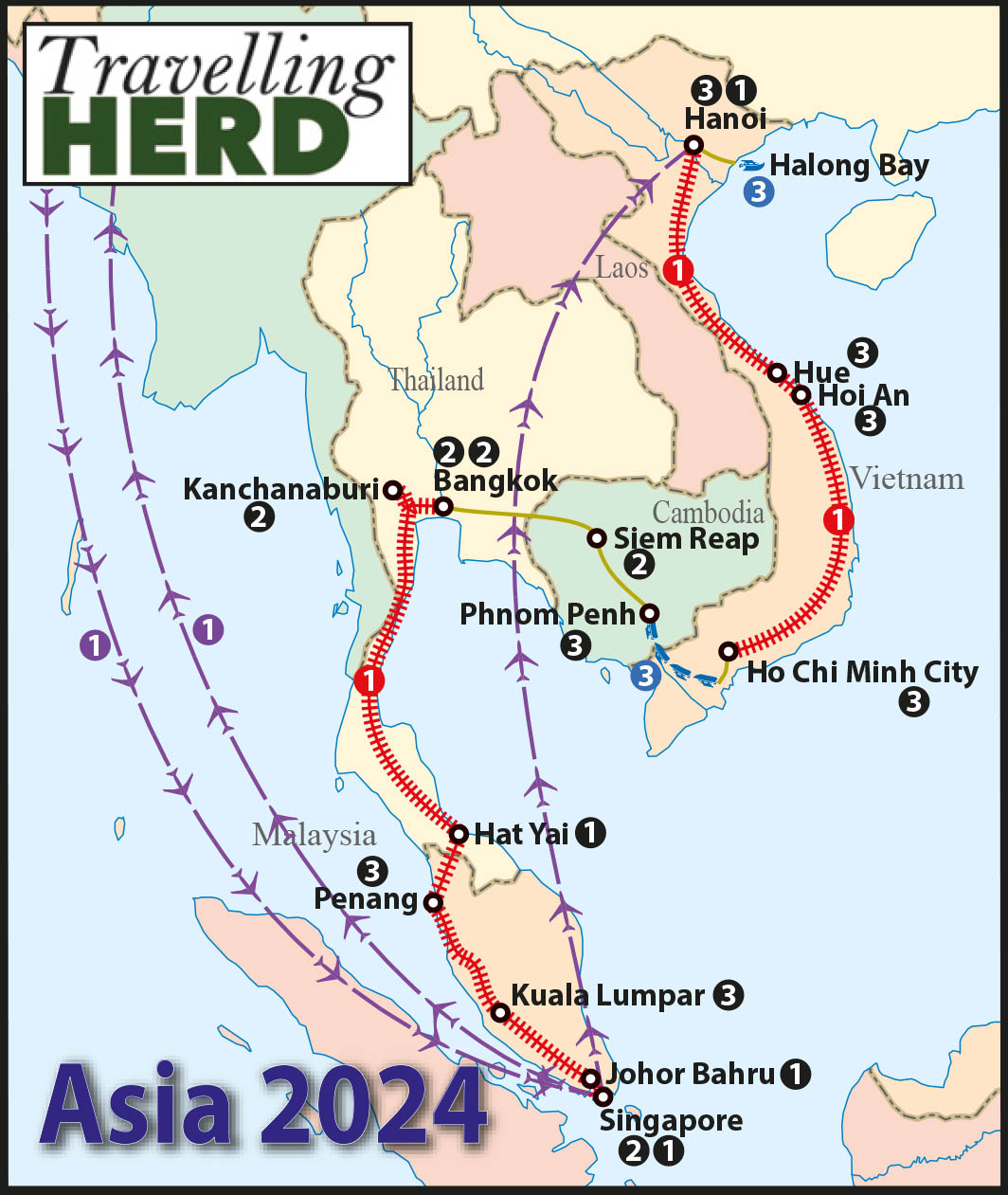Read this blog: The one where were Matilda shakes her Singapore Sling
Monday 15th to Thursday 18th April 2024
We would undertake the journey back to Singapore in two stages: firstly travelling from Kuala Lumpur to Johor Bahru via Gemas by train before crossing the Johor Strait into Singapore. Robert, despite his enthusiasm for all things rail-related, is always reluctant to rely too heavily on train connections which could be subject to delays and had therefore planned for us to stay overnight in Johor Bahru.
We went to Kuala Lumpur Sentral to catch the first train to Gemas.
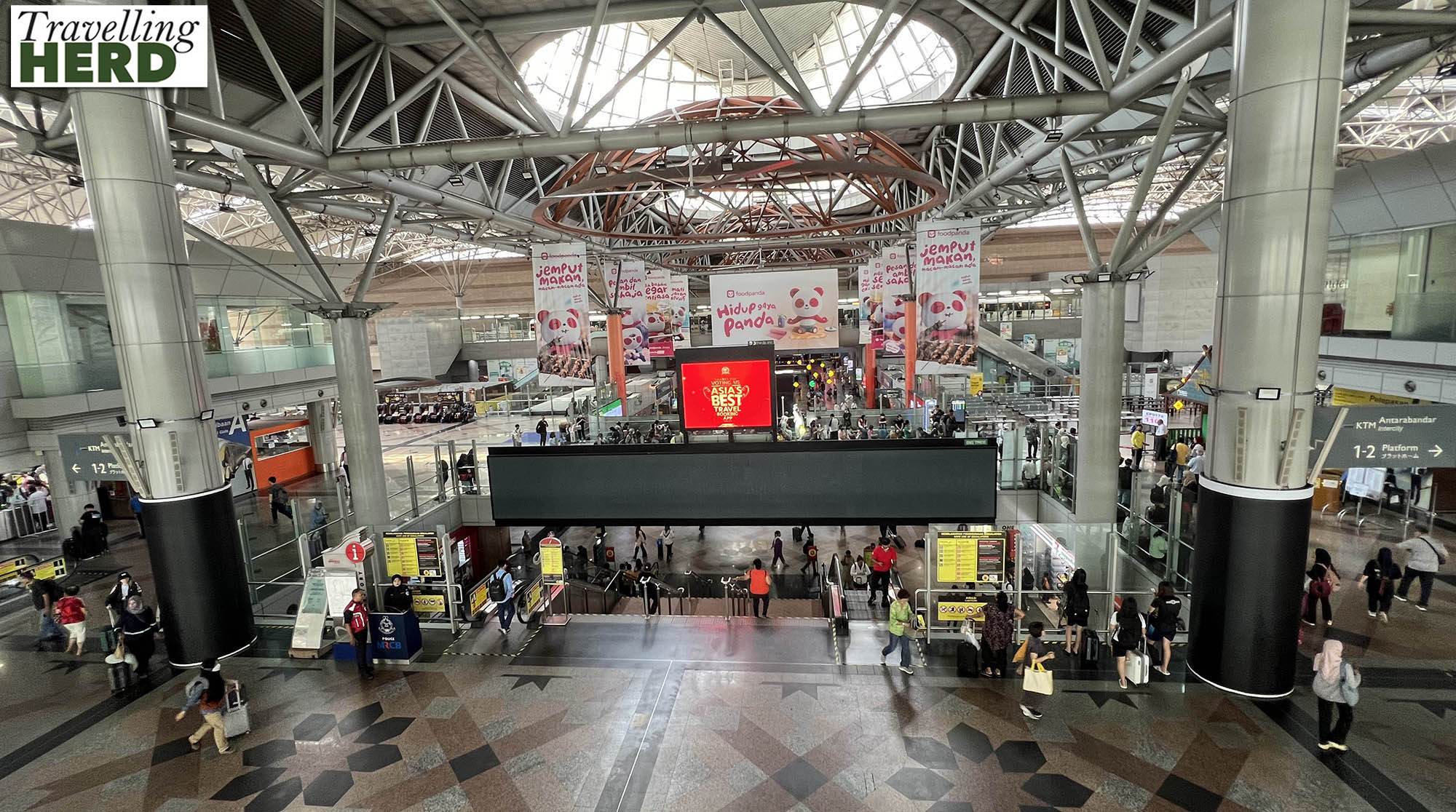
This was an aerodynamic high speed engine.
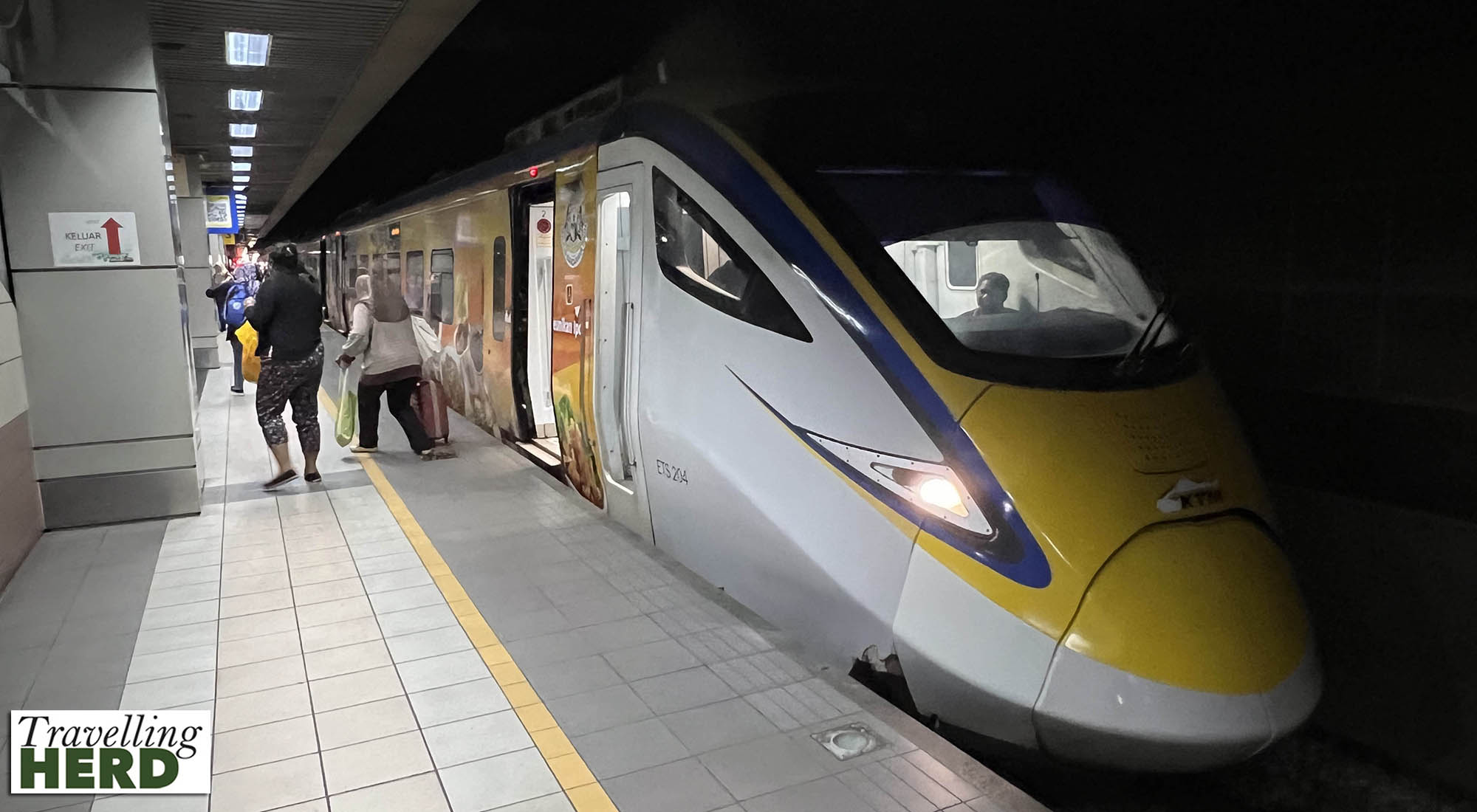
The route took us through the lush Malaysian terrain.
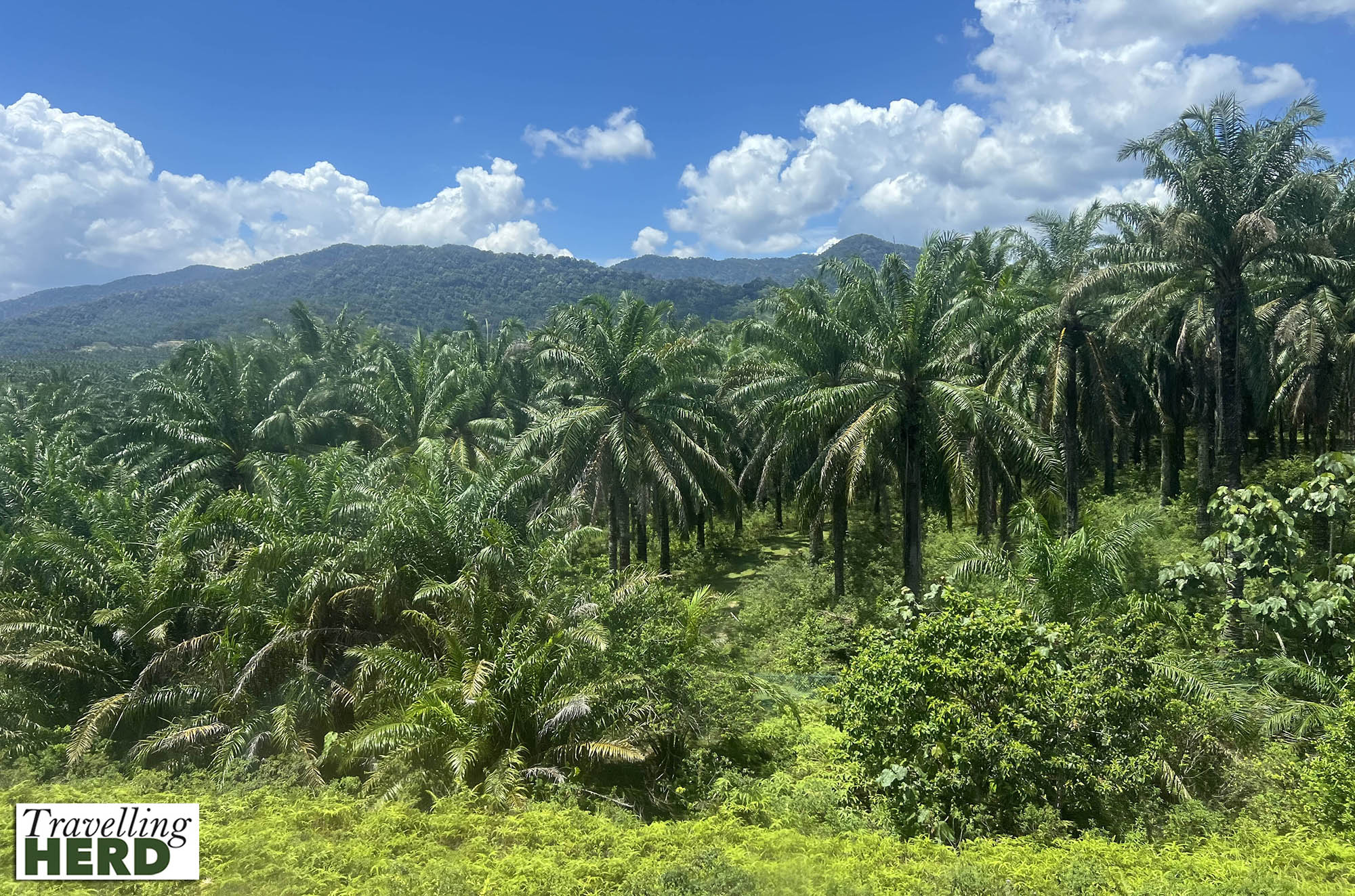
The onward train from Gemas to Johor Baru was running late and we became increasingly concerned that we would miss our next connecting train. However when Robert went to ask the ticket inspector he was confidently told not to worry as the service would wait. It transpired that the ticket inspector was also transferring to work on the connecting train which would definitely not leave without its full complement of staff.
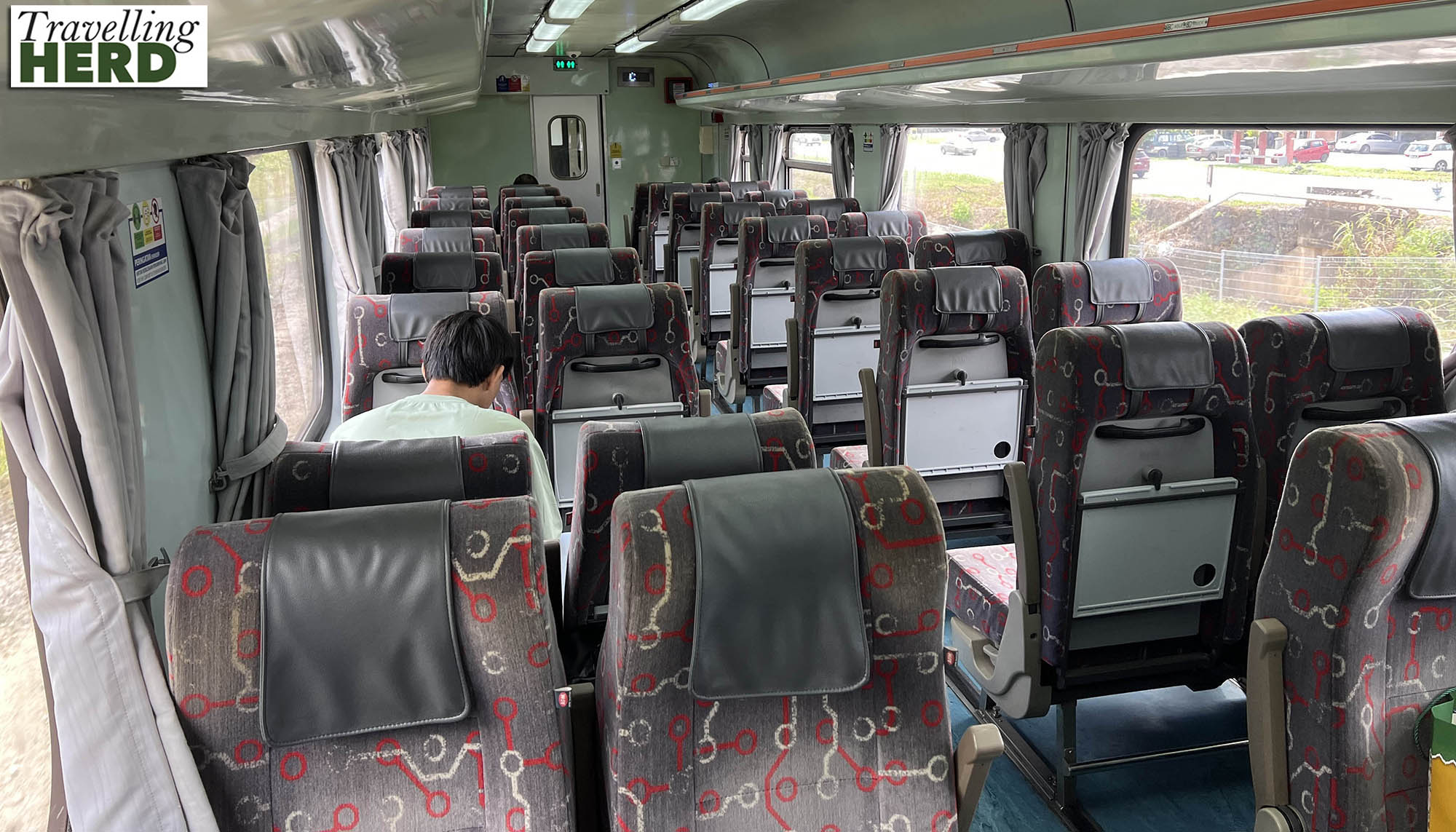
The Johor Strait, between the Malay Peninsuala and the Republic of Singapore is just three quarters of a mile wide at its narrowest point. The crossing also includes an international border/immigration control point. However, this short journey proved to be one of the more stressful parts of the whole trip.
Robert had booked a train that should have taken five minutes to cross the bridge over the Johor Strait. When we arrived in Johor Baru station signposts directed us to Woodlands for the border crossing and we followed signs that channelled us downstairs to a bus stop where there were hundreds of commuters queuing up.
The bus operated on cash only but having already spent all our Malaysian currency we had no small change. A ‘helpful’ Malaysian bus official said he would exchange some dollars for Malaysian currency so we could pay. We knew he was demanding a very inflated and disadvantageous [to us] exchange rate but we were sitting ducks.
The bus drove us across the bridge to Singapore running parallel to the train tracks and we realised we had somehow circumvented the train. At the other side we followed a convoluted route ending up at another bus stop which was not even close to where we expected to arrive. Checking on Google maps Robert identified the right bus number needed to reach the metro. When the bus arrived we had further issues paying – this time cash was not acceptable and it was not possible to pay for two people on one credit card. The bus driver wanted to leave and a random woman kindly paid for Matilda. Despite our issues with payment, the bus driver was really helpful and made sure we got off at the right stop to catch the metro to our hotel.
Having reached Singapore, we went in search of brunch. Matilda had identified a couple of places which were recommended and Robert planned the route. This took us past Parkview Square, which Matilda would have liked to have seen more of, if she hadn’t been in need of sustenance. Parkview Square is an office building which despite its impressive ‘Art Deco’ exterior clad in granite, bronze, lacquer and glass was actually completed in 2002. It is now home to the embassies of Austria, Mongolia and the United Arab Emirates.
Subsequent research revealed that the bar in the lobby here, called Atlas, has a gin tower containing over one thousand different types of gin. According to Wikipedia, this “used to hold a wine chiller from which a female bartender dressed as a fairy would retrieve bottles on request by means of a flying wire apparatus’. We are not wine drinkers but even Matilda felt that it would have been worth making an exception to be served by the equivalent of Tinkerbell. If we return to Singapore, Matilda will be demanding a drink here.
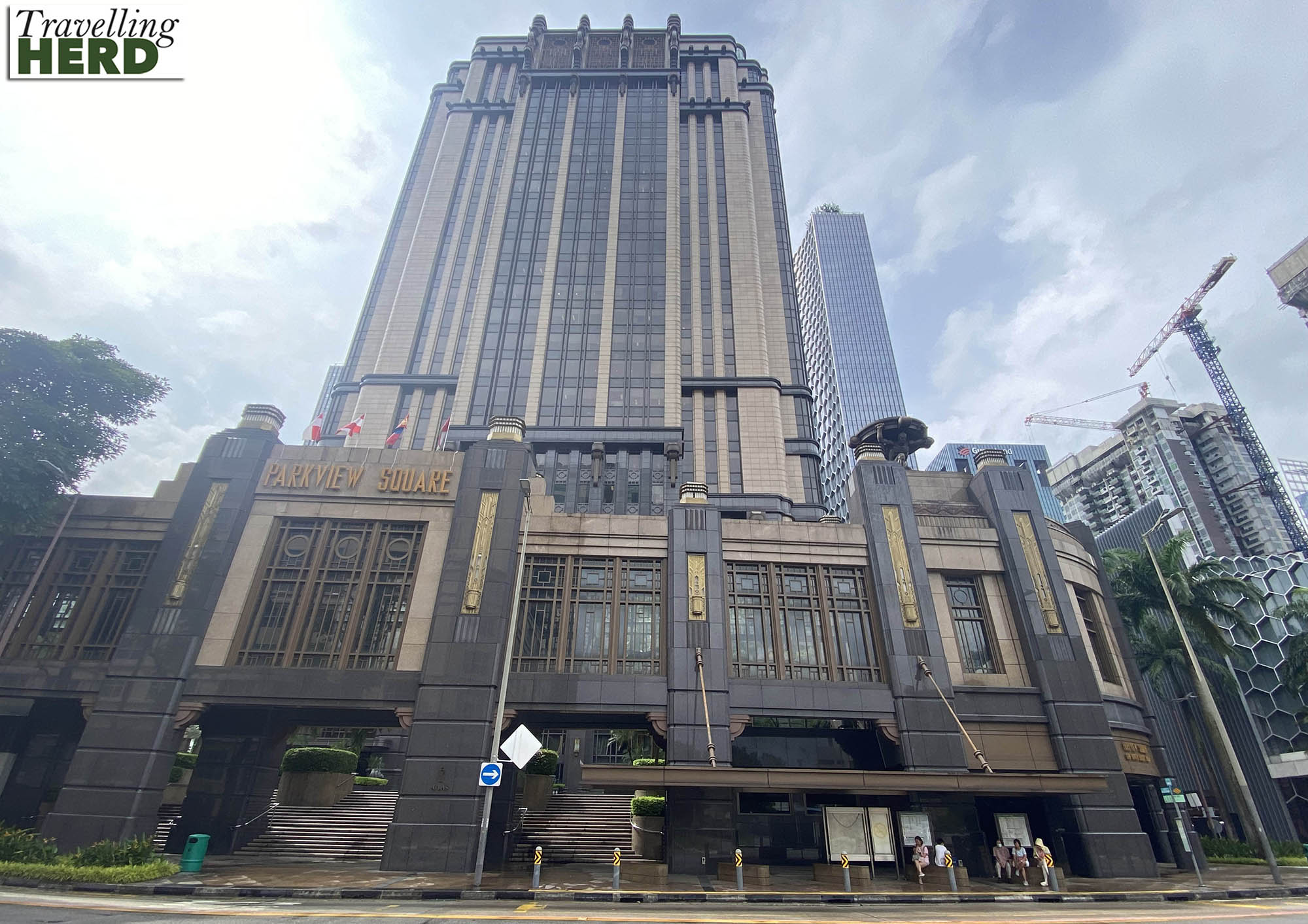
We went to the Earlybird Café for brunch. Unfortunately they had run out of avocado, which Matilda would have ordered. Nevertheless the food was tasty and afterwards we felt replenished and ready to see some sights.
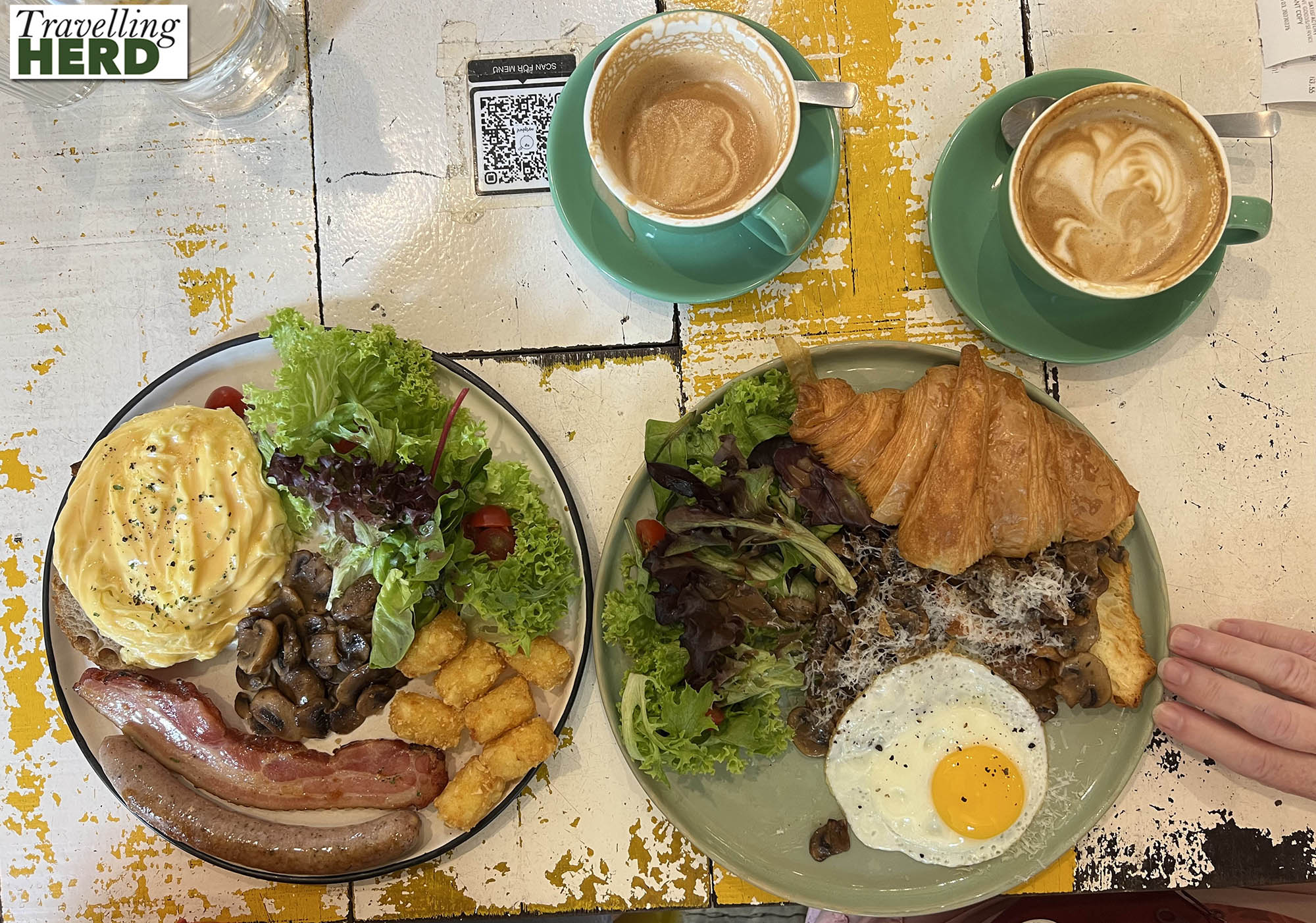
Although undoubtedly representative of the arrogance and oppression of colonialism Matilda finds that, against her better judgement, colonial architecture often resonates with her. The combination of a familiar architectural style from home with elements which are more suited to the local climate always makes her smile.
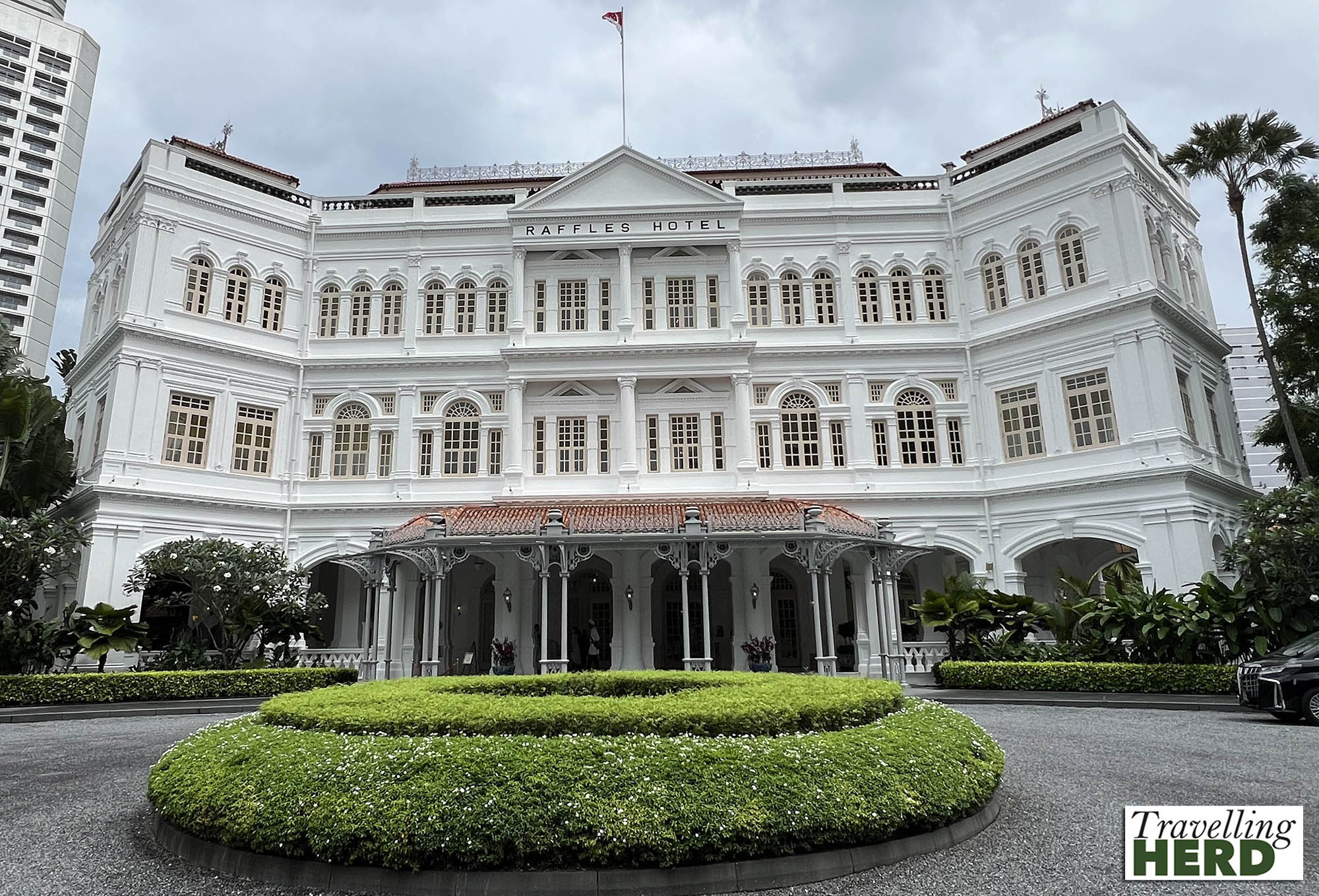
On the outward journey, we had stayed predominantly south of the Singapore River.
This time we walked around the old colonial heart of Singapore with a fine view back towards the Marina Bay Sands.
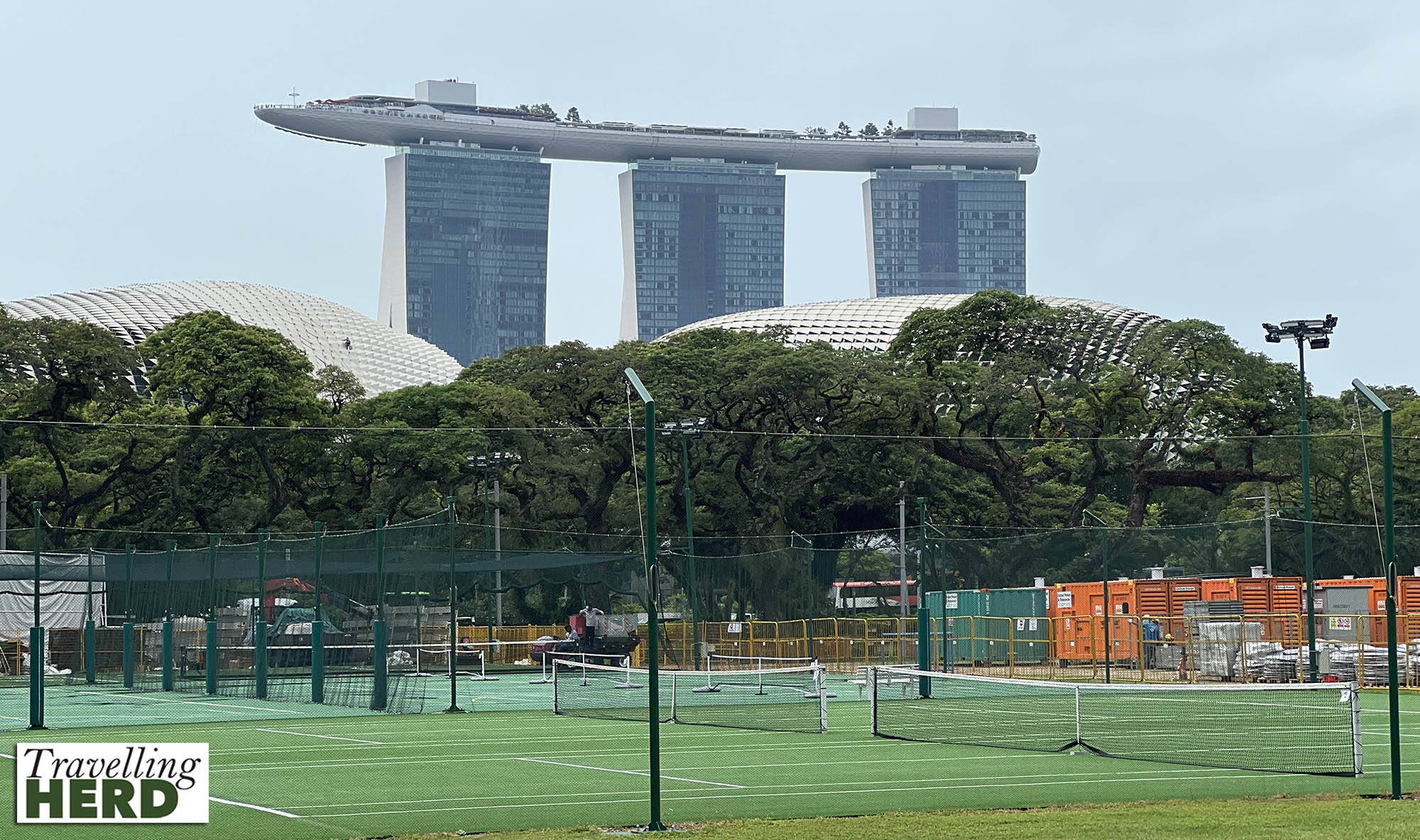
In 1822, Sir Stamford Raffles drew up a town plan for Singapore which included a plot of land set aside for an Anglican Church. The congregation had to raise sufficient funds before construction of the first church on the site could begin in 1834. Things did not go smoothly. The original church was criticised for looking too municipal – more like a town hall or assembly rooms than a place of worship – so in 1842 a spire was added. Unfortunately this was built without a lightning conductor and it was struck first in 1845 and then again in 1849. In 1852 the building was declared unsafe and closed for worship and was demolished in 1855.
We have seen several churches which have been struck by lightning on our travels and we are always impressed by the faith of those who chose not to see this as a sign of divine disapproval but to rebuild on the same site.
The existing Cathedral was built in the gothic revival style by Indian convict labourers between 1856 and 1861.
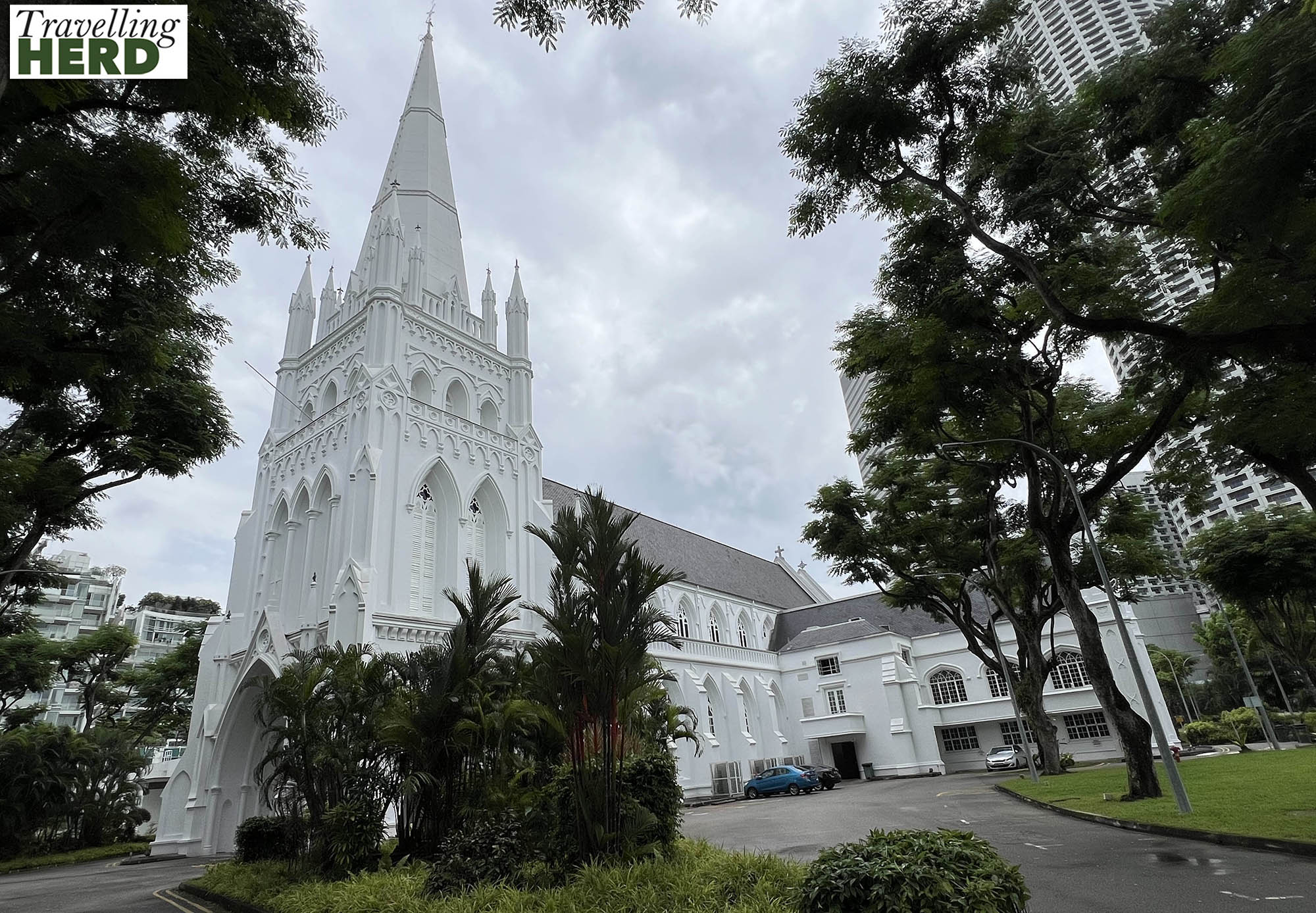
The interior is light and airy with attractive blue ceilings.
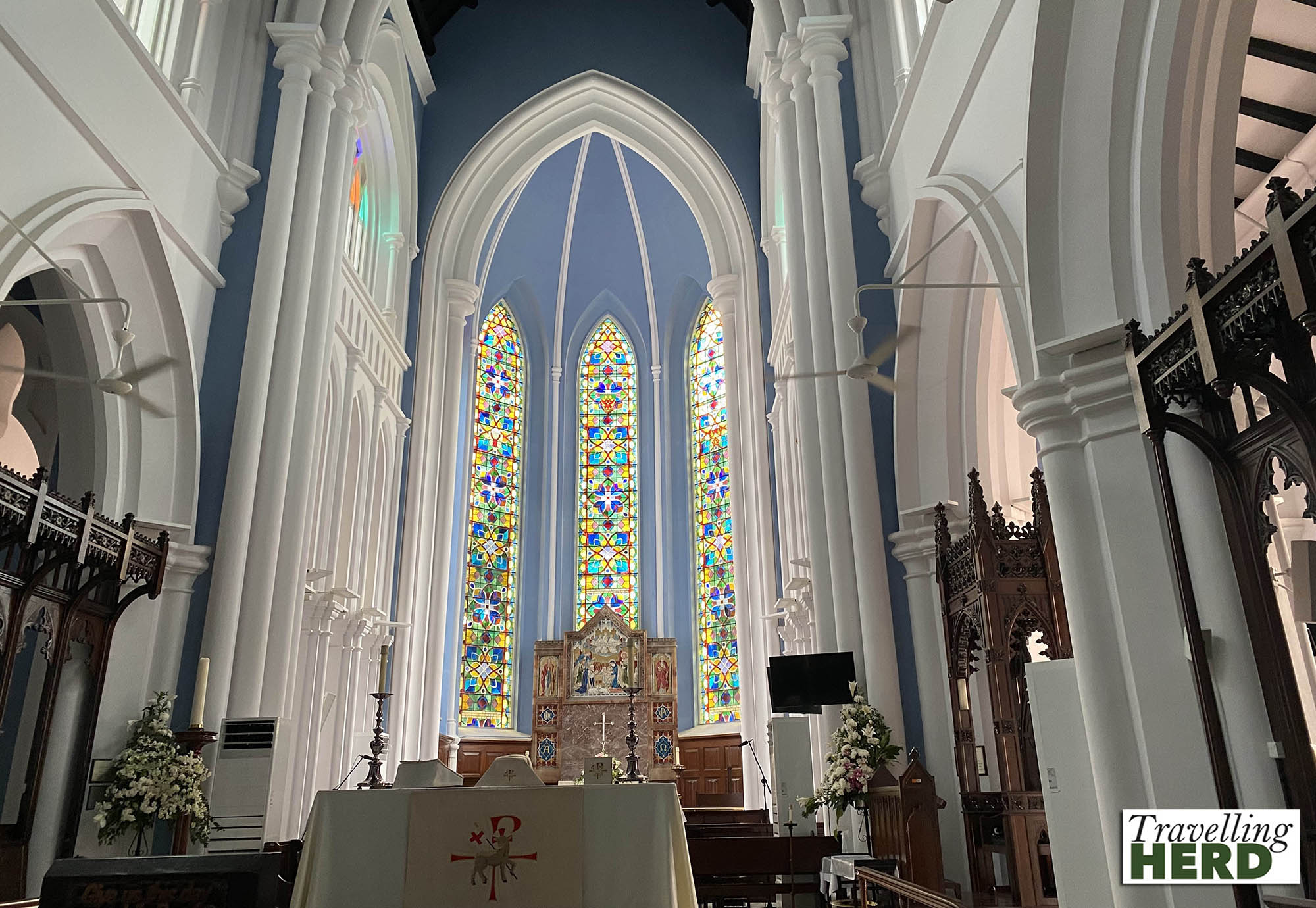
Further on from the cathedral we passed the National Gallery. . .
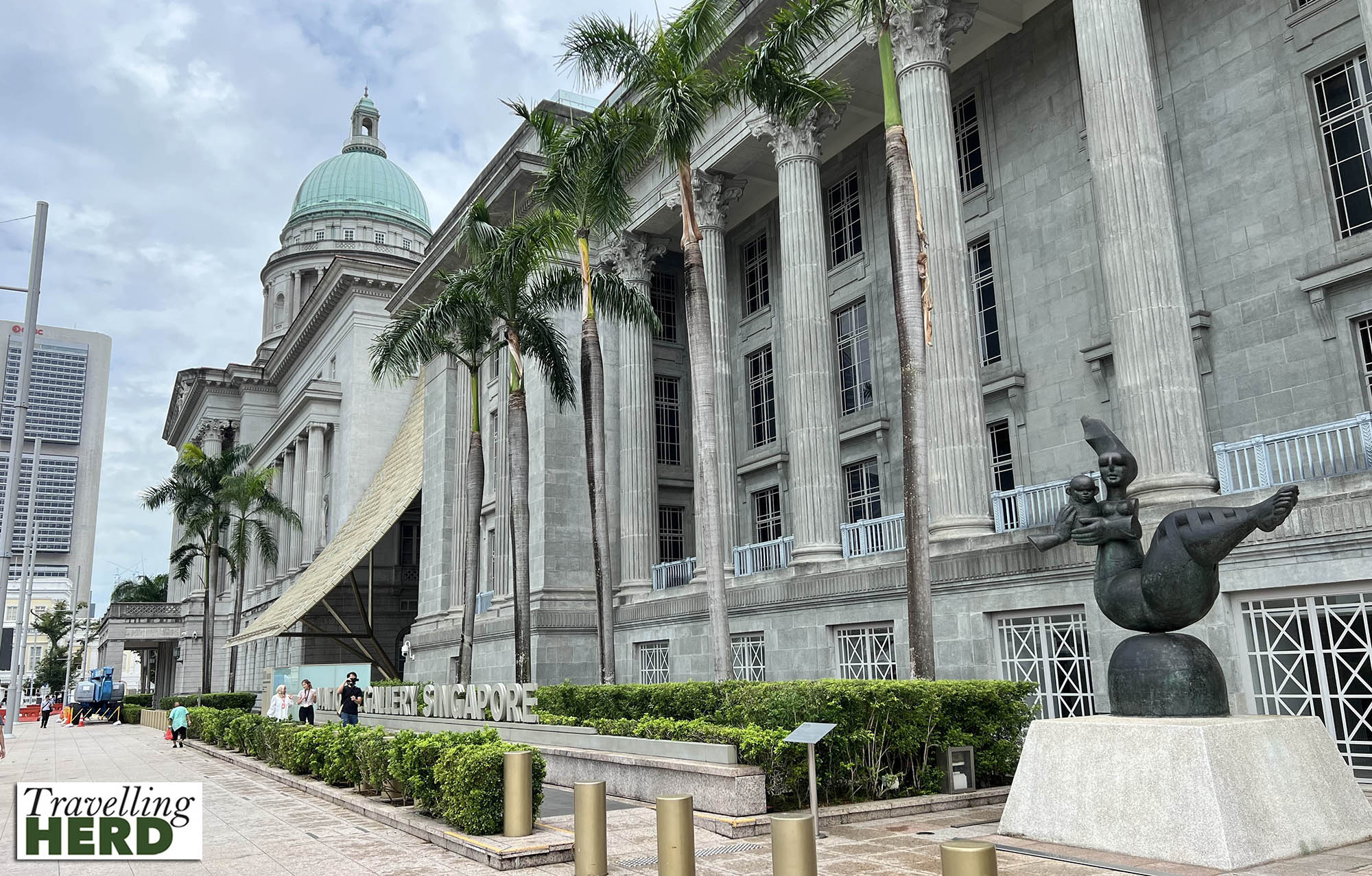
. . . opposite the Singapore Cricket Club.
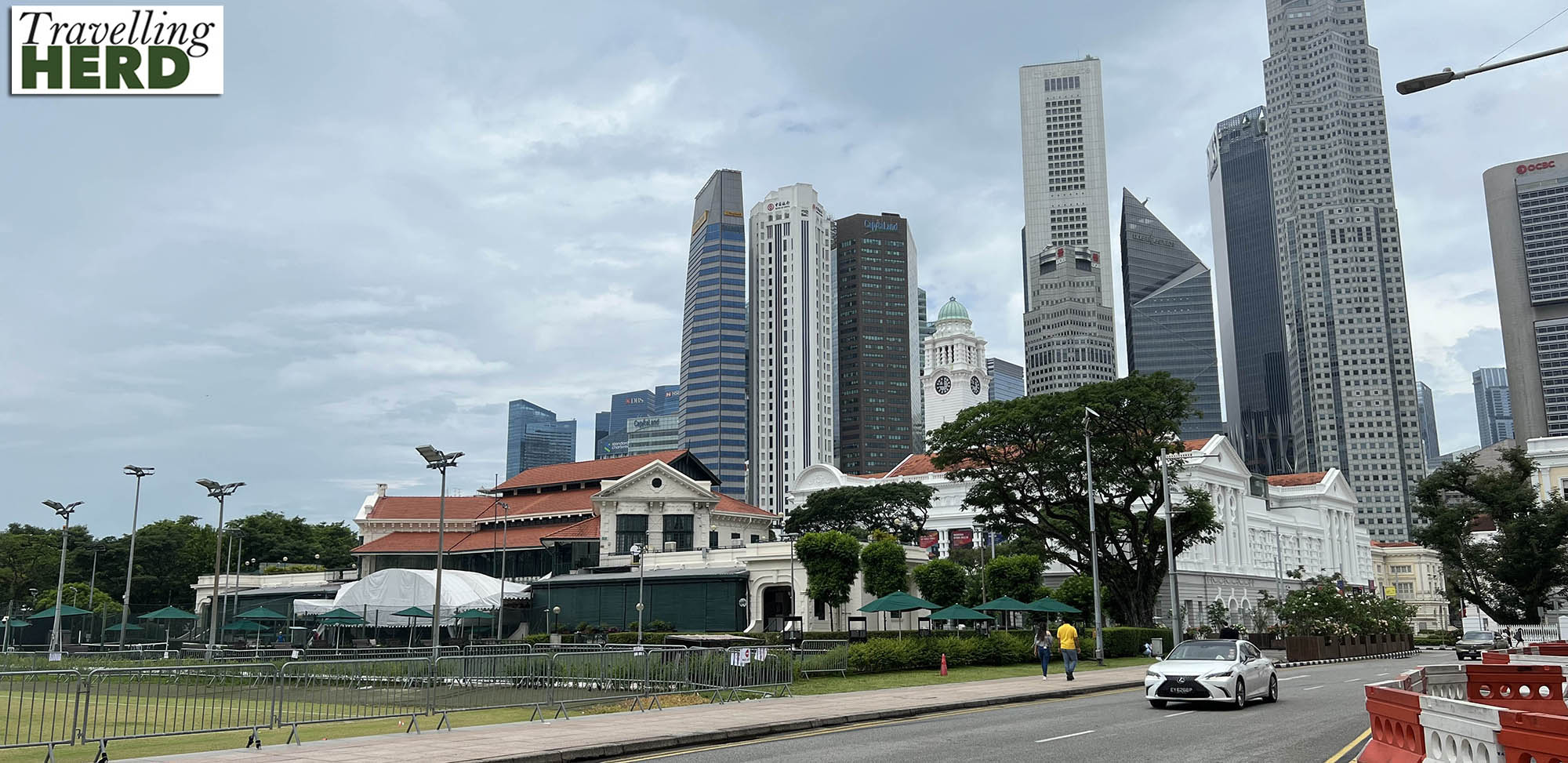
The neo-Palladian Old Parliament House has been converted into an art gallery and venue.
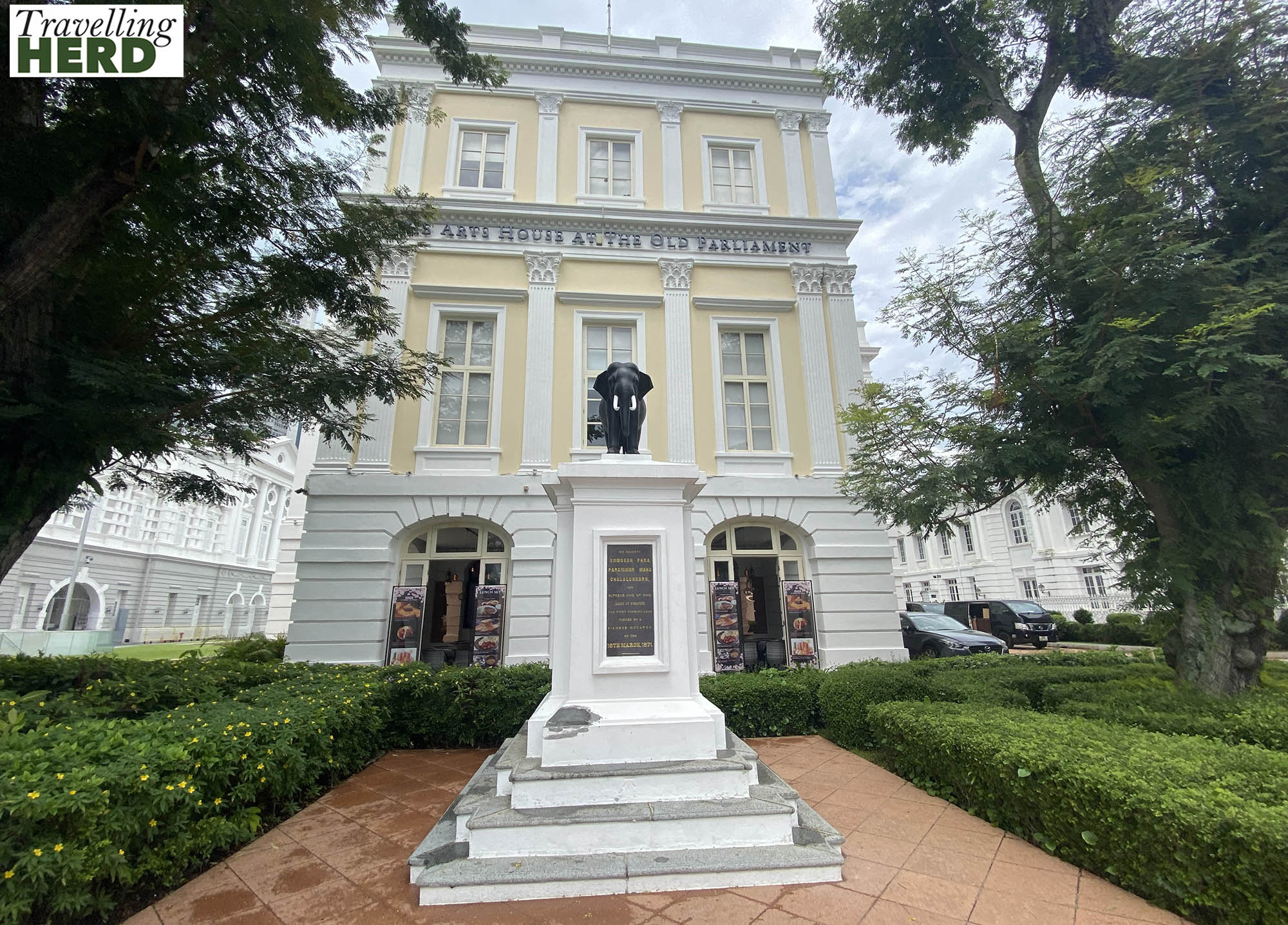
Originally built in 1827 it is perhaps the oldest surviving building in Singapore and was home to the Parliament as recently as 1999.
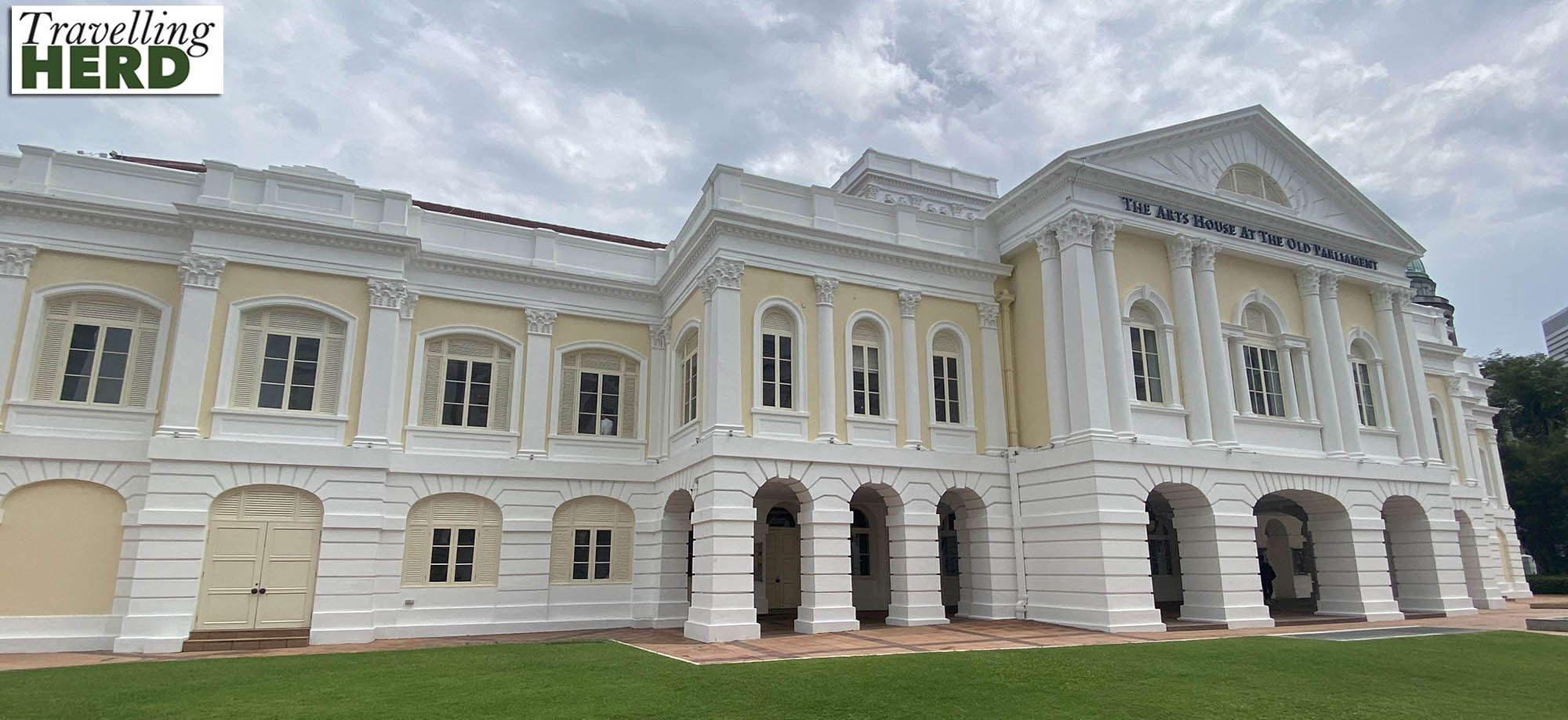
A statue marks the site where Raffles originally landed.
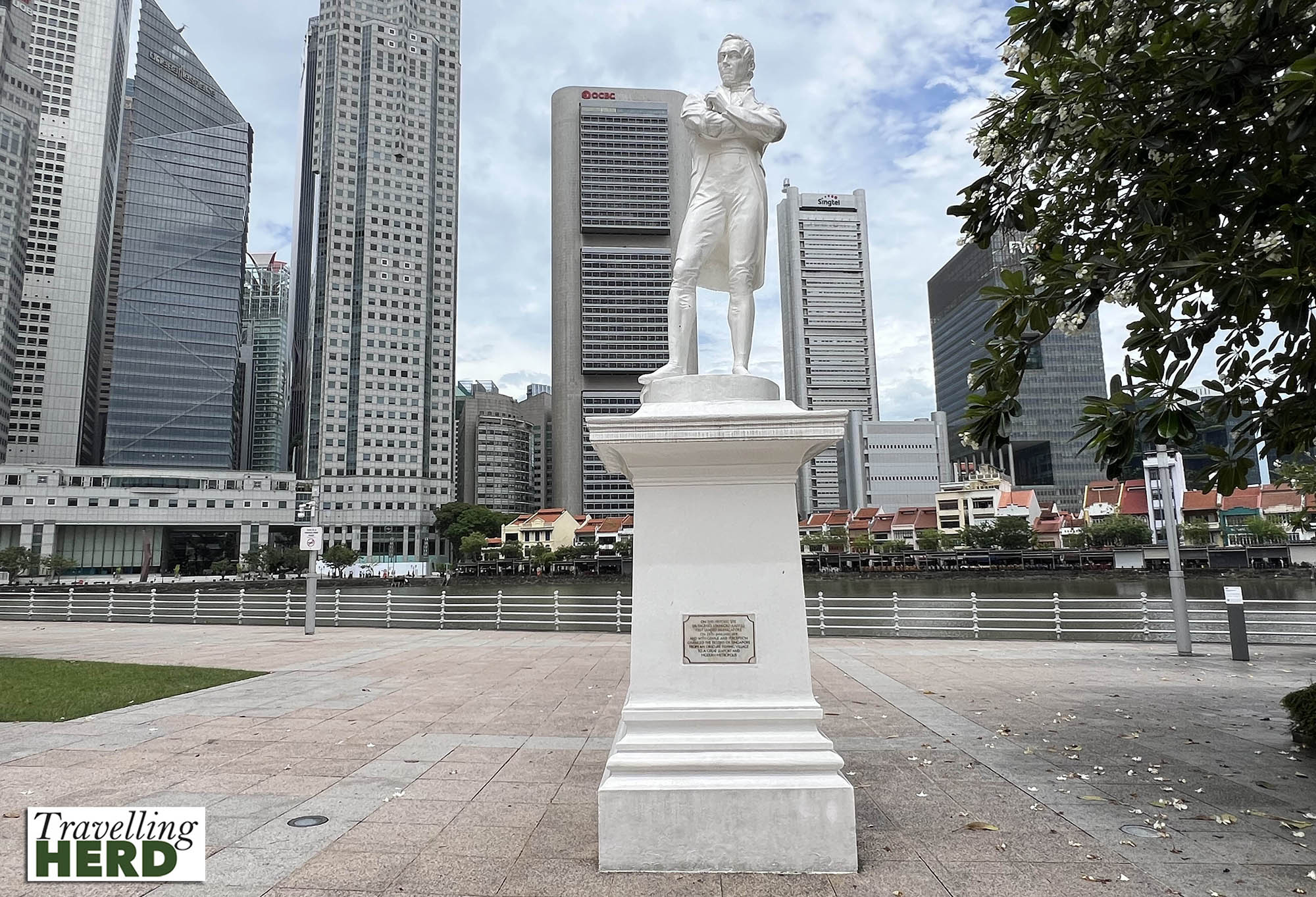
Matilda obviously liked the statues of cats playing on the Cavendish Bridge. . .
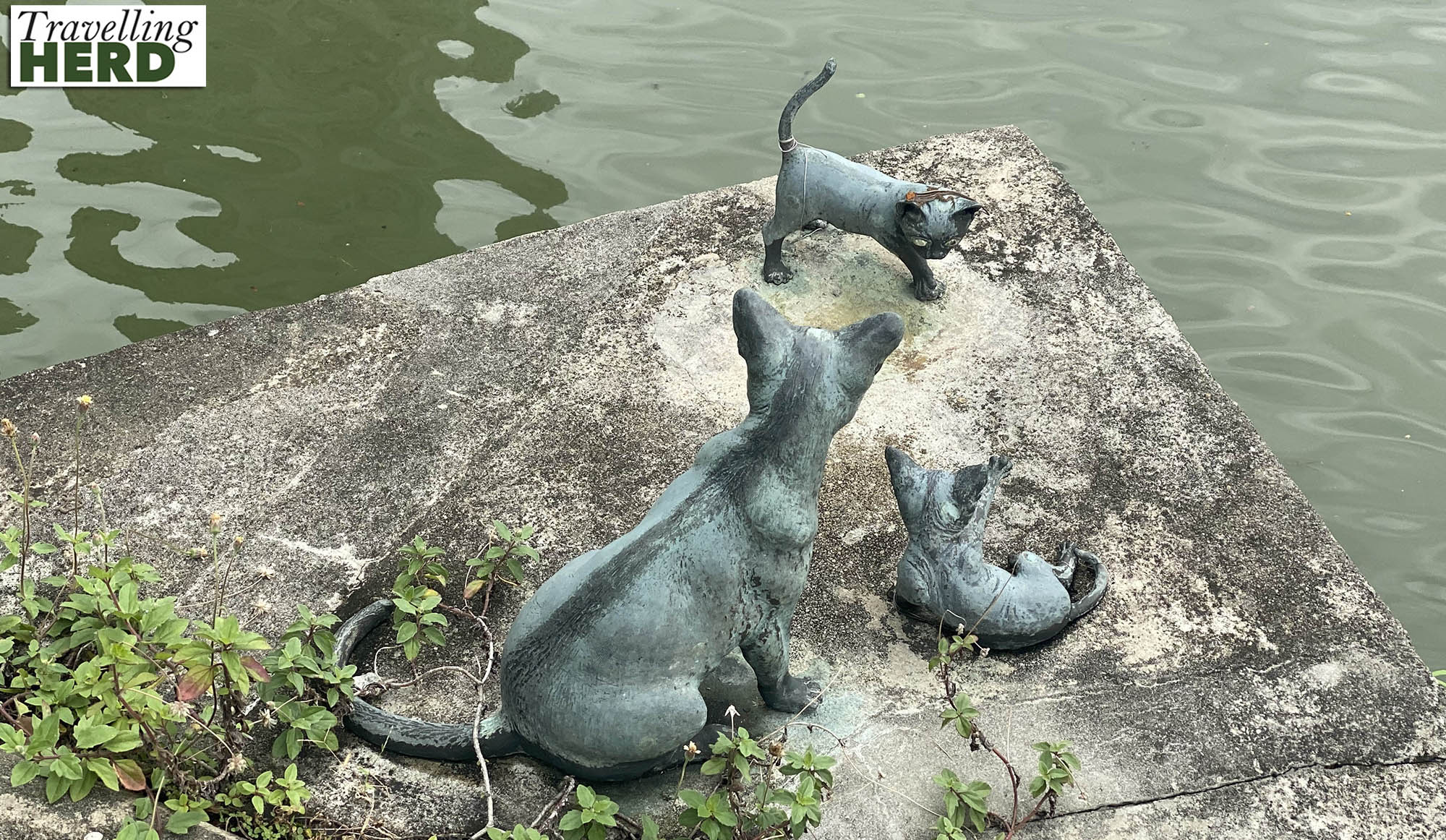
. . . and the curvaceous ‘Bird’ sculpture by Colombian sculptor, Botero.

On our walk back to the hotel we passed a police security robot which disconcertingly followed us for a short while as though we had committed some form of transgression.
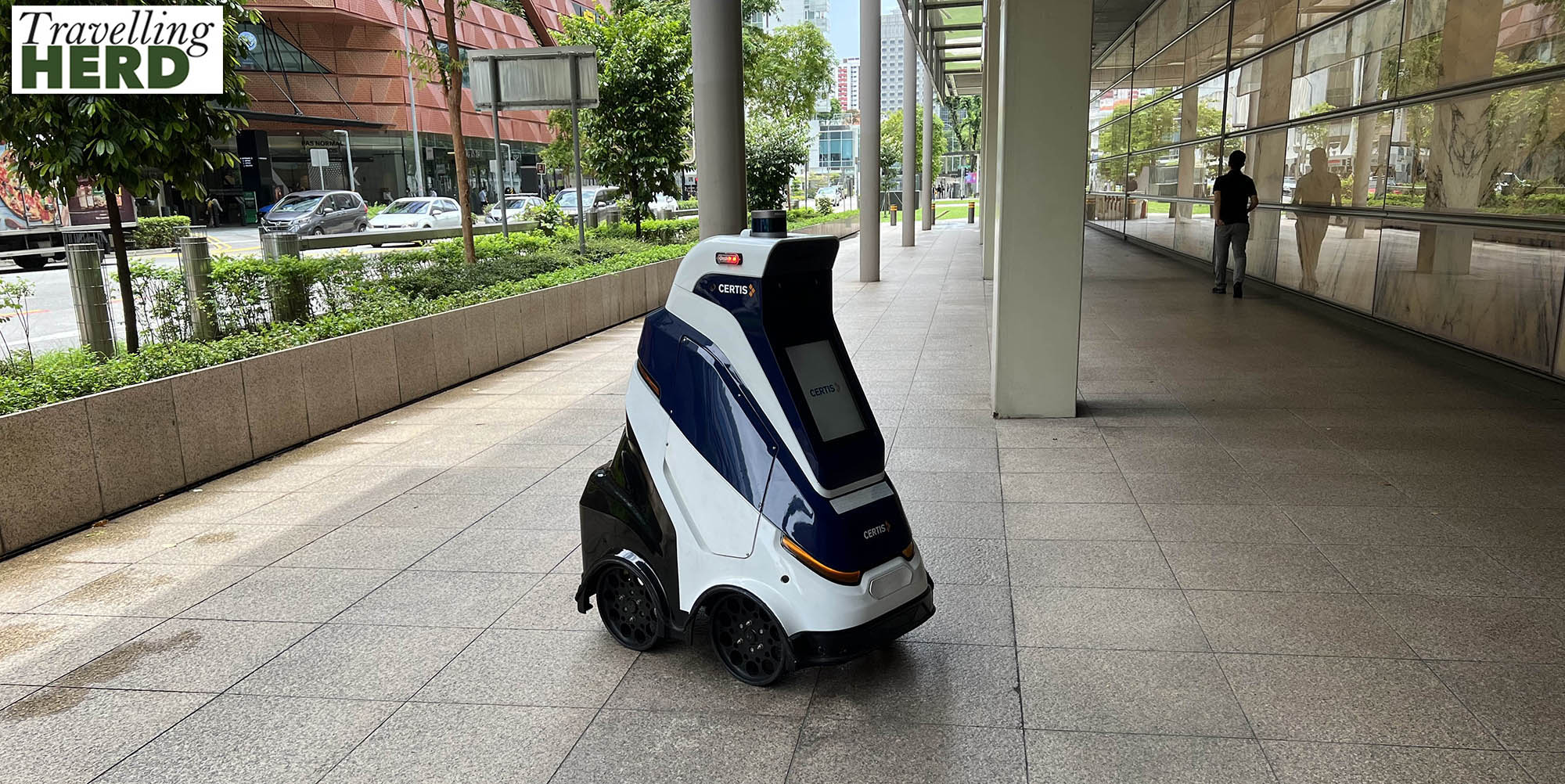
Matilda first had a Singapore Sling at the Long Bar in Raffles on 6th April 1987 on her way home from teaching English in Japan. Although she was only in Singapore for a flight transfer, she left the airport for a swift cocktail and got a taxi to Raffles and back. Airport staff told her she would have to pay airport tax, which she readily agreed to do but there did not seem to be a process for recovering this and it went unpaid/unclaimed.
Robert had promised Matilda she could visit to the Long Bar again on this trip. We returned to our hotel to freshen up and then strolled the short distance to Raffles from our hotel.
Walking through the hotel to the Long Bar, we passed the Tiffin Room and we both felt that every home needs one of these.
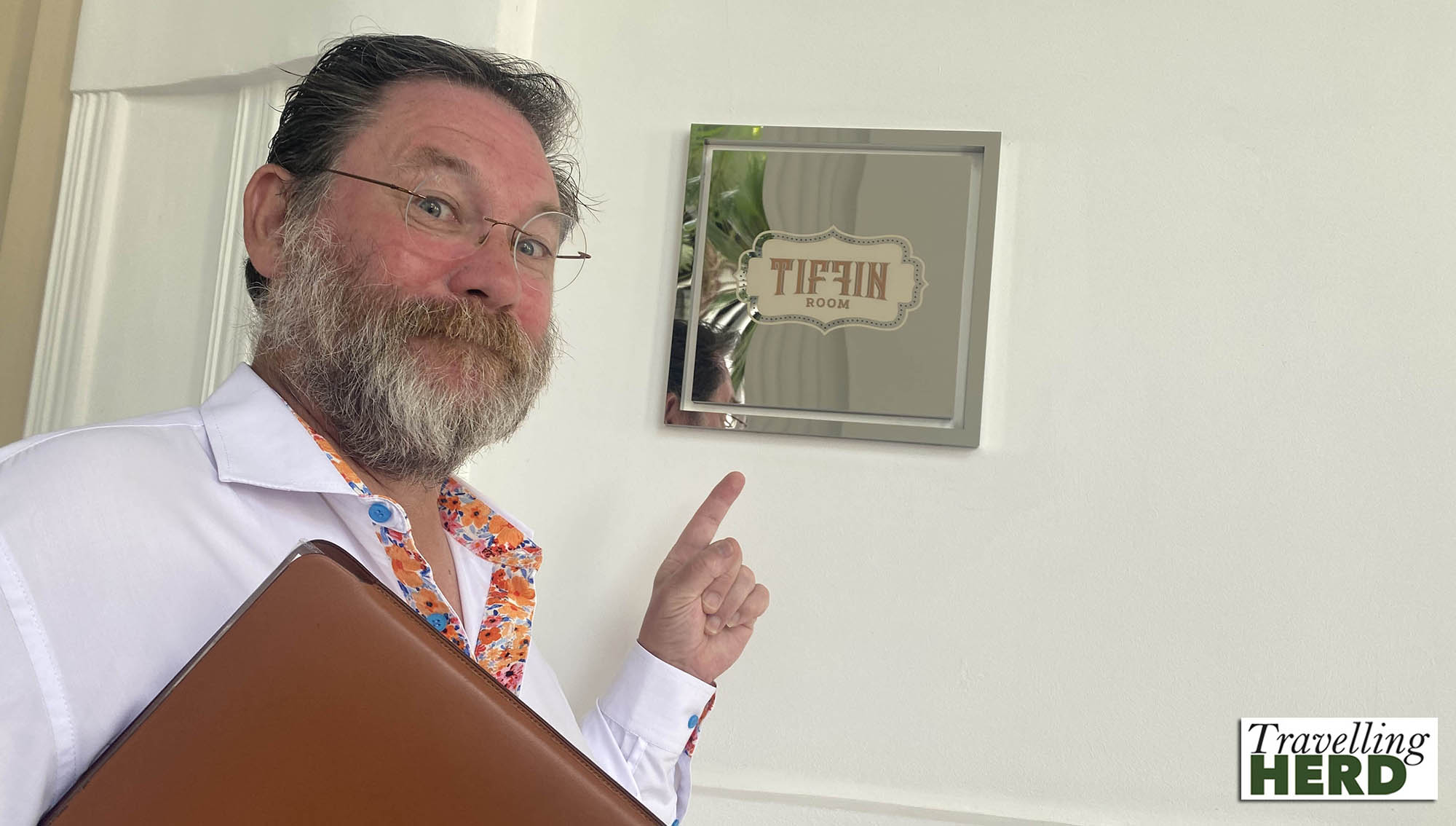
As we took our seats at the Long Bar, we were surprised by the crunching underfoot. Hessian bags of peanuts are provided at regular intervals along the bar and it is customary for patrons to throw the shells on the floor. We were reminded of the American Vietnamese couple we had met on the cruise in Ha Long Bay who had told us that finding food on the floor was the sign of a good establishment.
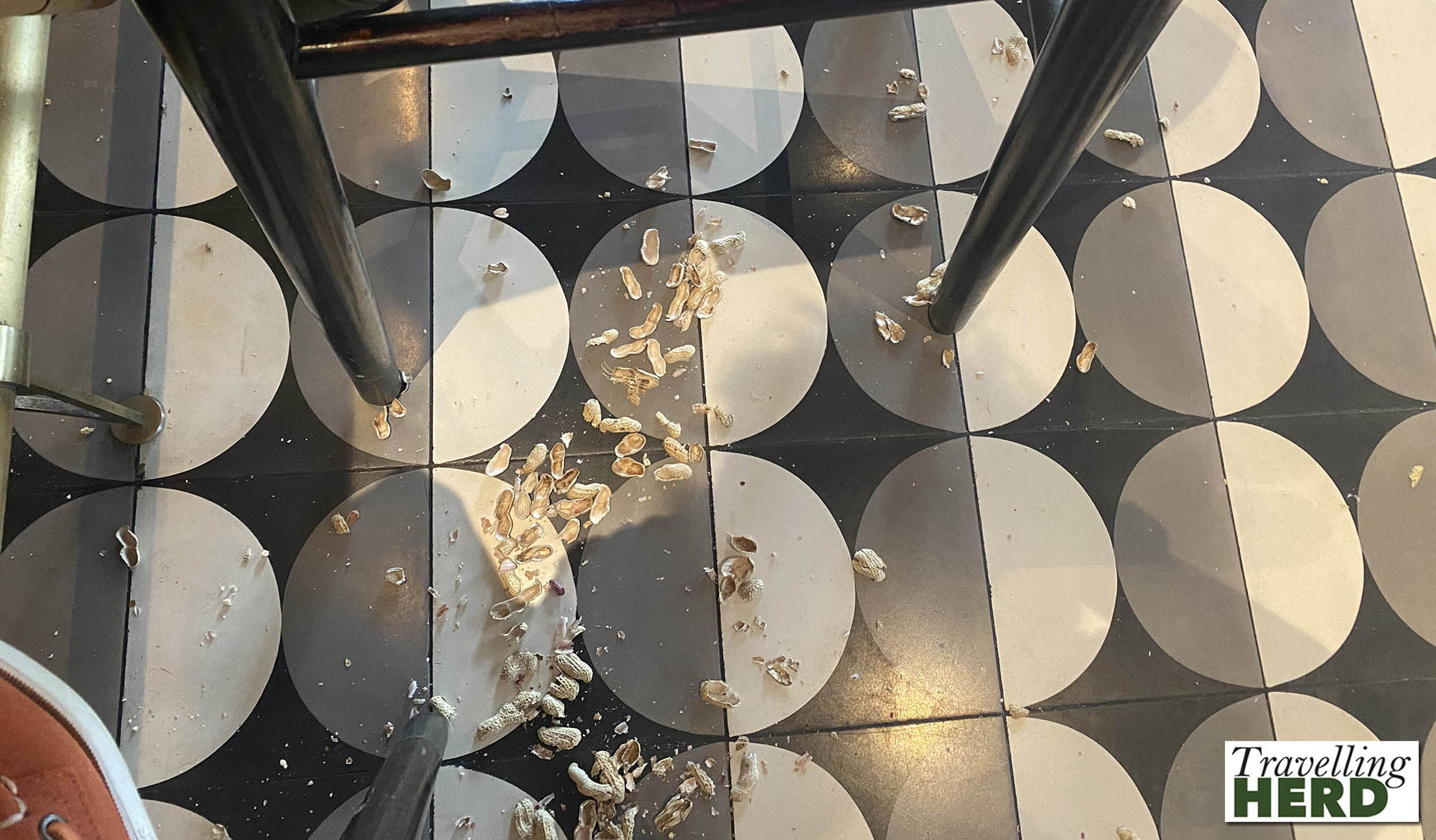
Matilda was not feeling any hint of recognition but this was perhaps explained by the fact that the Long Bar has been moved since her last visit. Gentlemen originally convened for a snifter under the portico at the front of the hotel. However, in 1921 the portico was replaced by a ballroom and this included the Long Bar which she had visited in 1987. During a major restoration in 1991, the Long Bar was moved to its current position in the Raffles Arcade. It now also spans two floors.
Bolted to the bar on both floors is a Sling Shaker, devised to allow bar staff to mix several Singapore Slings at once and Matilda was allowed to give it a turn [see Video of the Day].
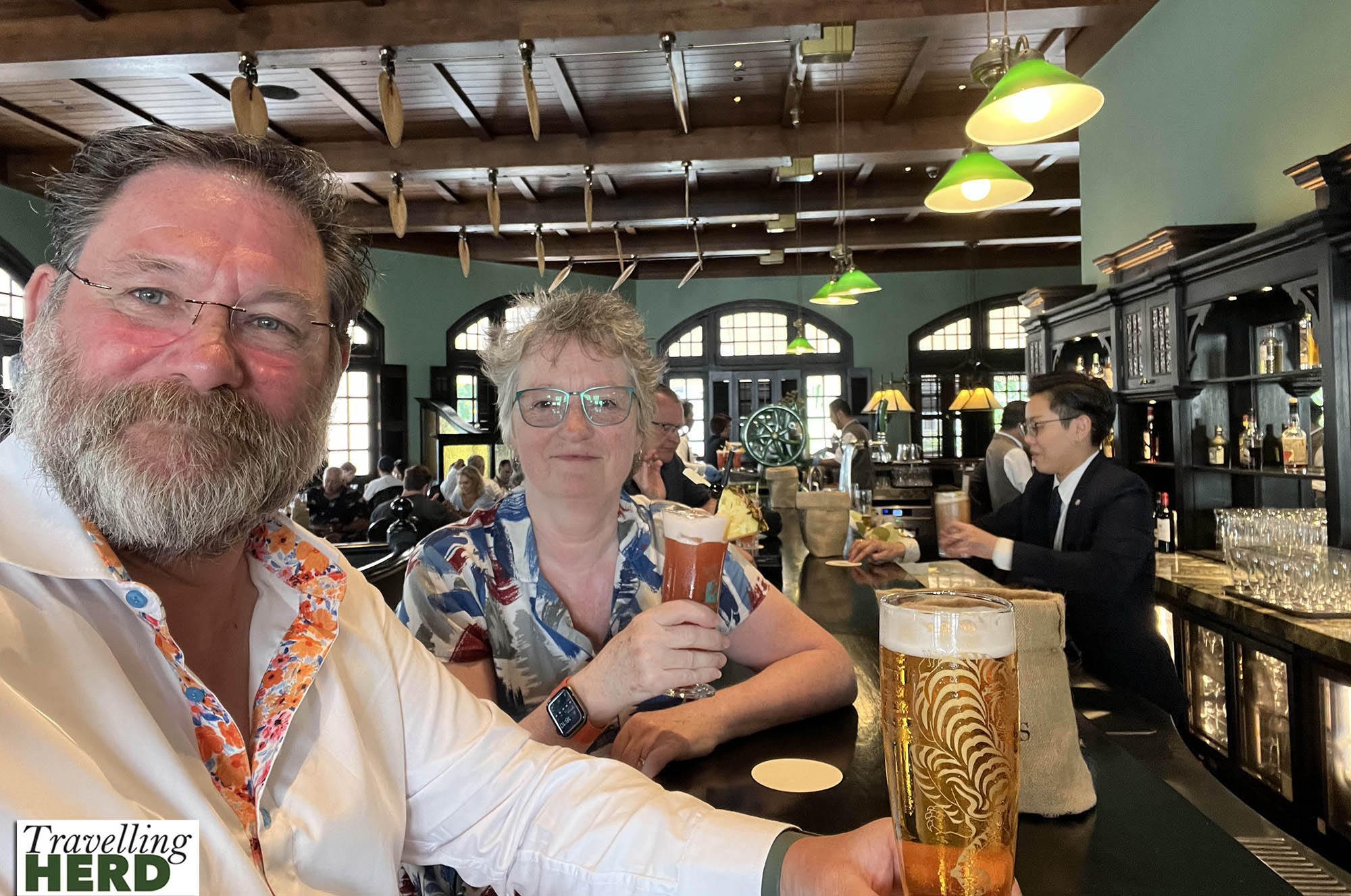
The Singapore Sling dates from 1915. According to the etiquette of the time, ladies could not consume alcohol in public and a bartender therefore created a cocktail which looked like fruit juice but which deceptively included gin and liqueurs.
Opposite Raffles Chijmes is a convent converted into walled complex with bars and galleries where Matilda indulged in some carbs to counteract the Singapore Slings before retiring for our last night in south East Asia.
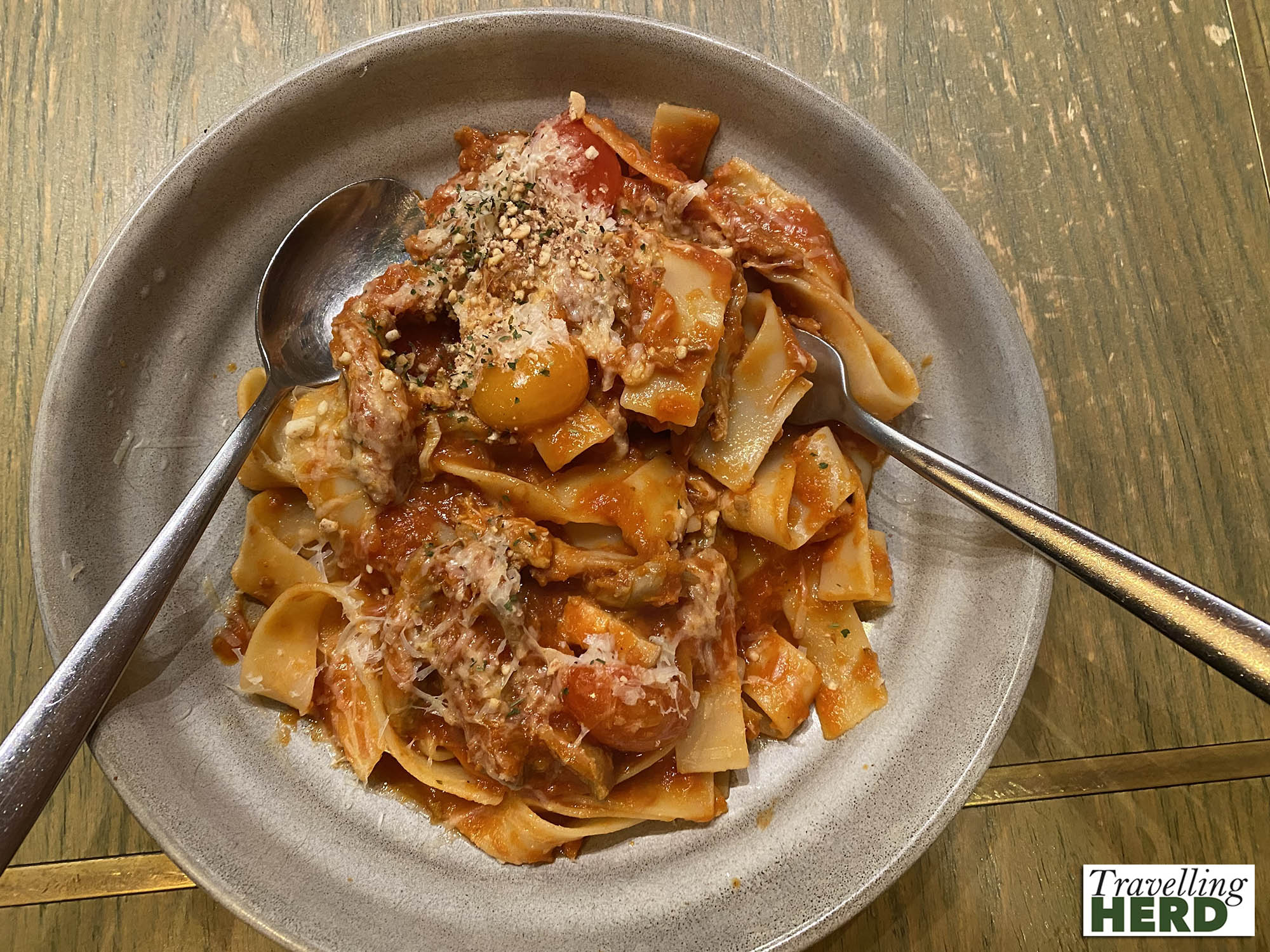
We have, as usual, done a lot of walking on this holiday despite the heat and we both planned to lighten the luggage on the return journey by leaving one pair of shoes behind when we packed.
Farewell old footwear: you served us well.
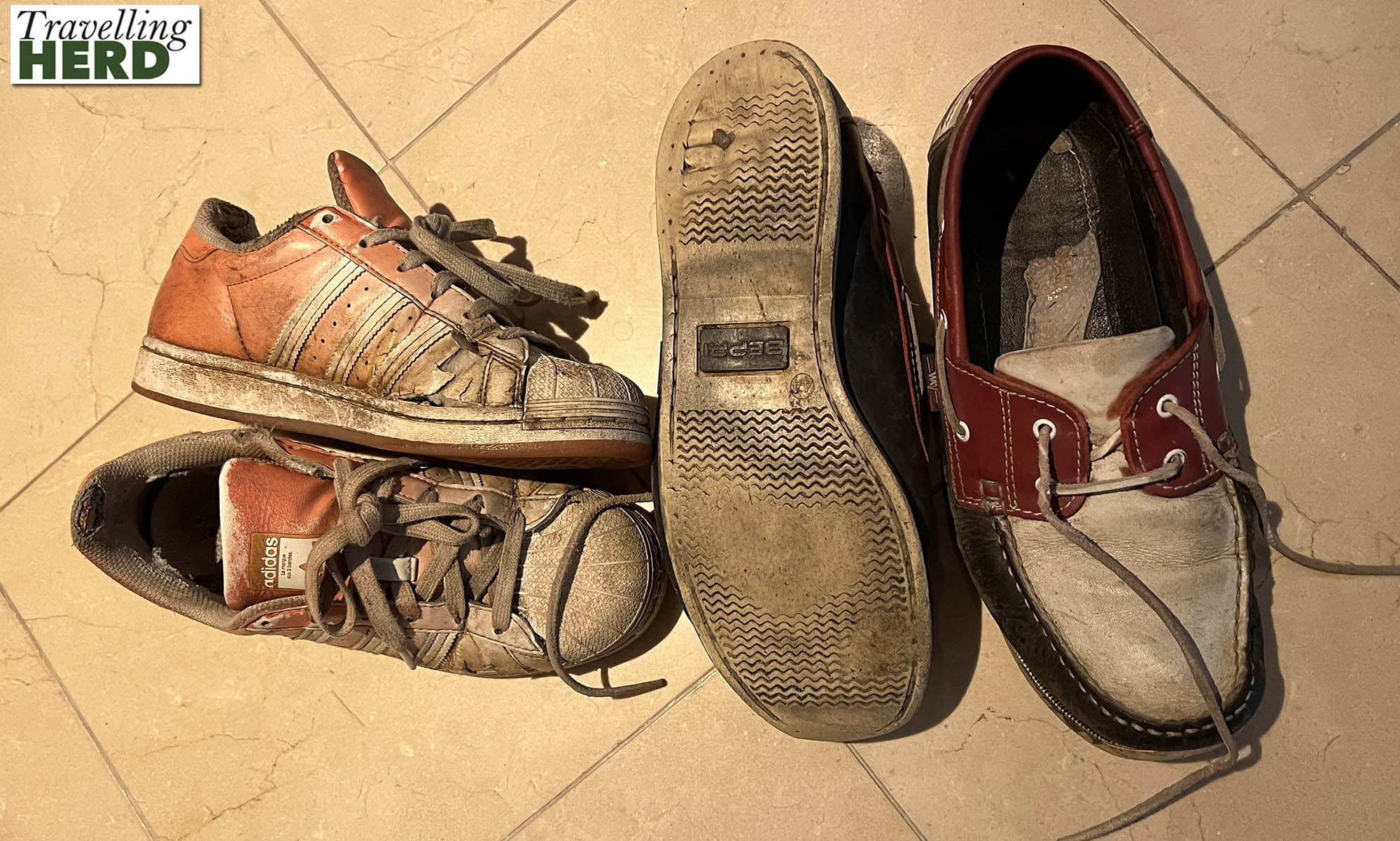
We had allowed time to visit Jewel. This is a vast retail complex linked to one of the terminals at Changi Airport Singapore. The central attraction is the Rain Vortex waterfall.
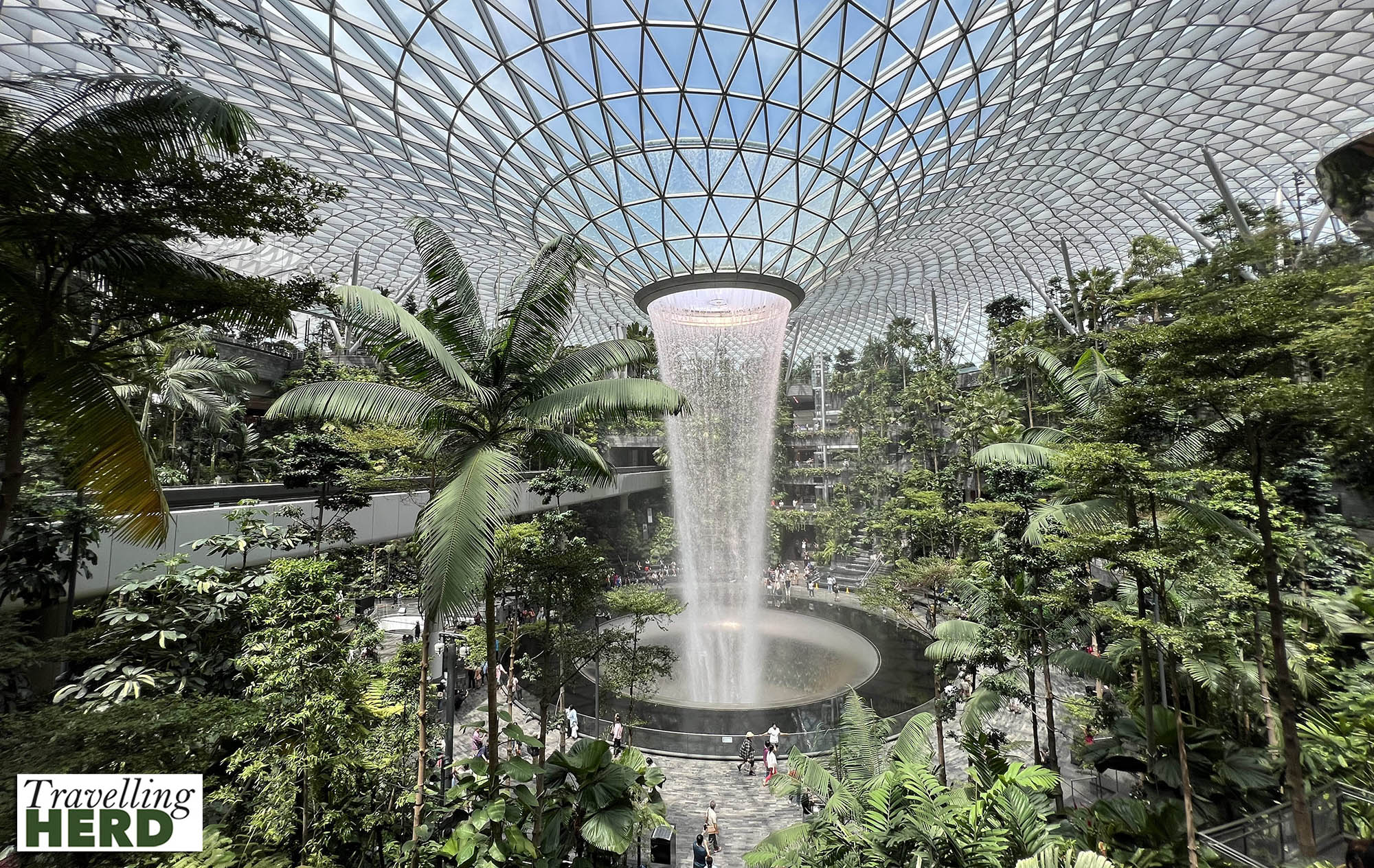
Jewel opened in 2019 and the waterfall is constructed from steel and glass.
The Rain Vortex is the tallest indoor waterfall in the world.
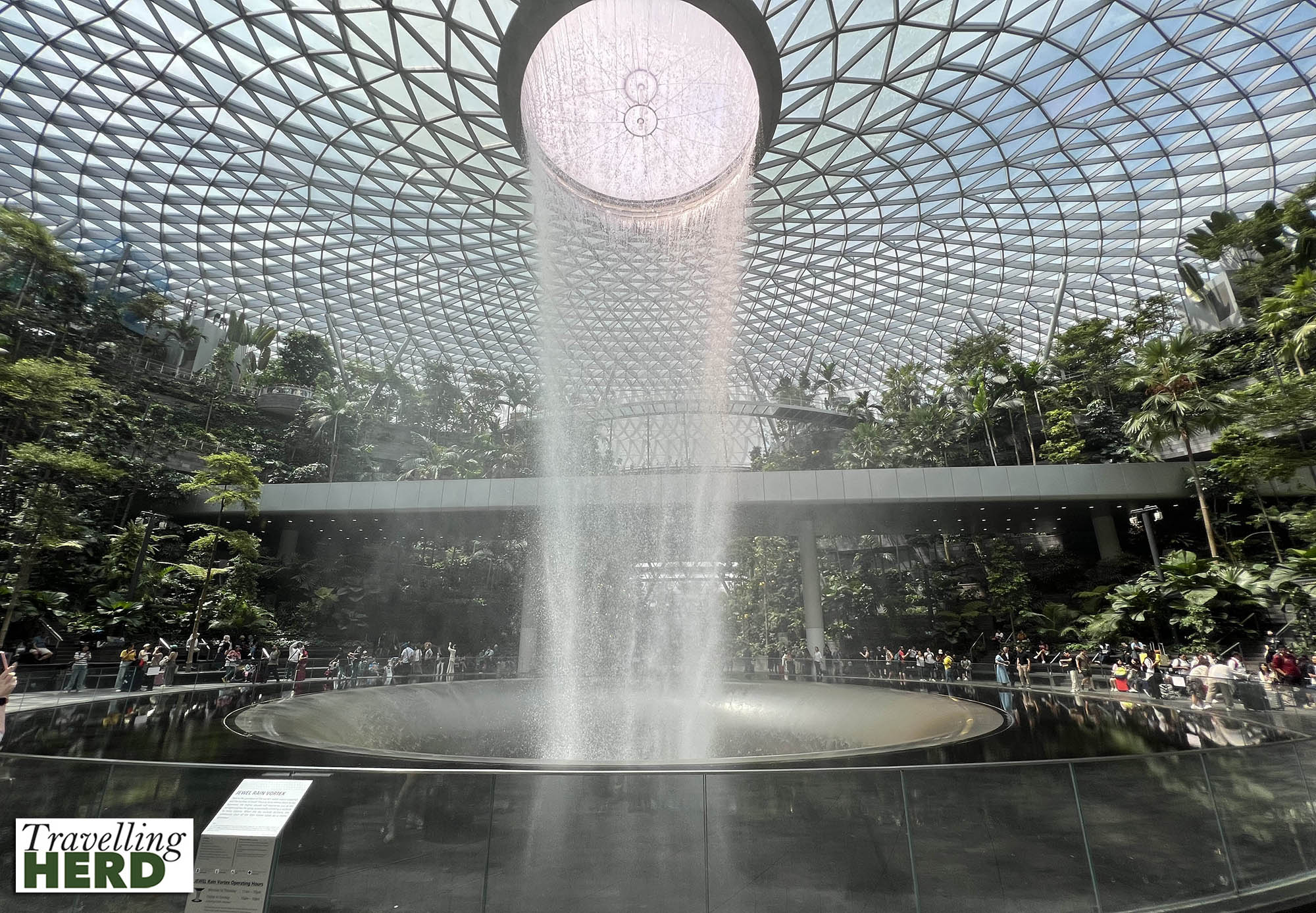
It flows forty metres down 10 floors from the roof to the basement
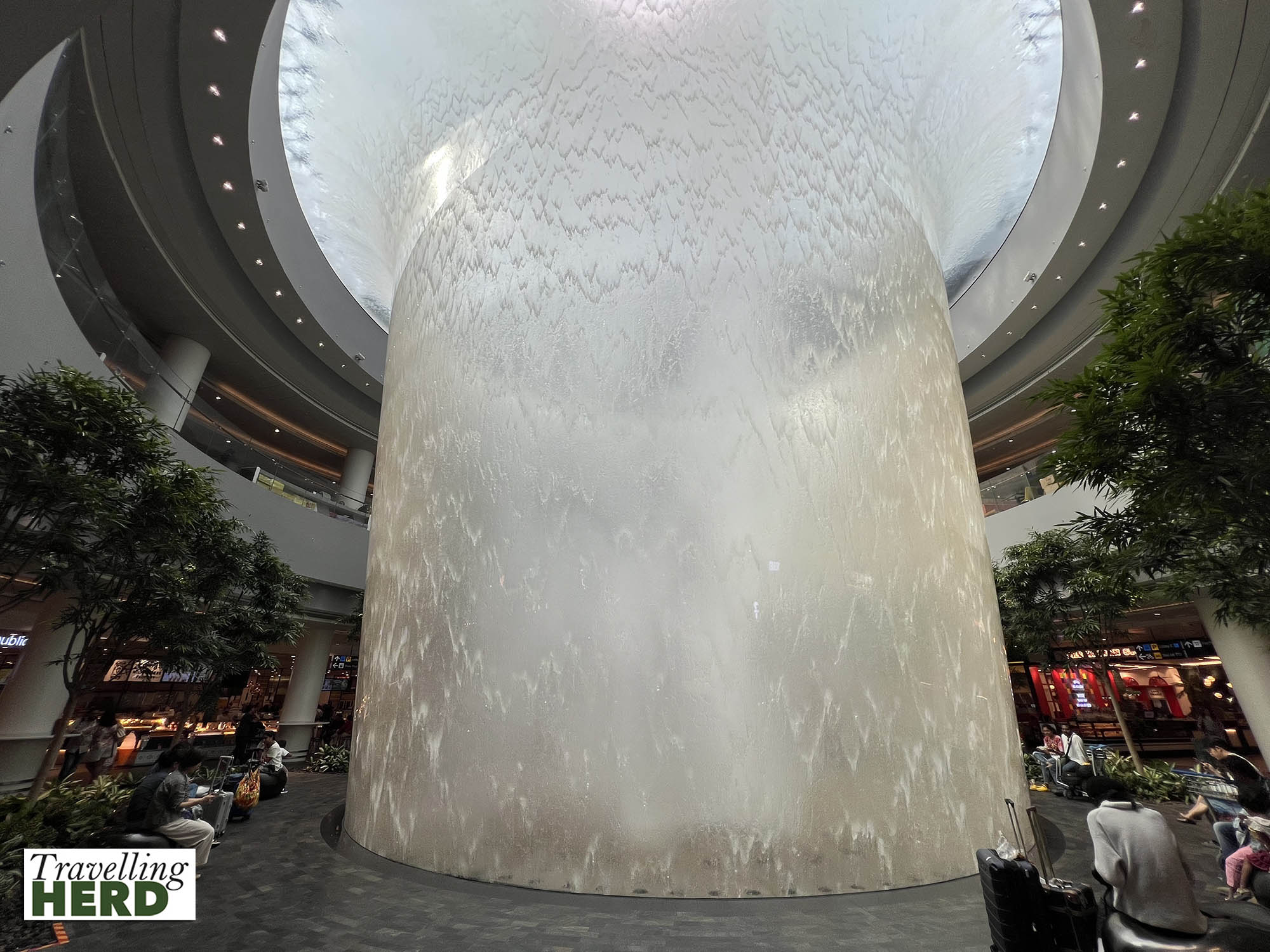
The waterfall passes through a terraced forest and can be viewed from multiple levels, although access is not free to all of them. Having seen this extraordinary sight, we prepared to board our flight home, saying farewell to Asia.
Video of the day:
Selfie of the day:
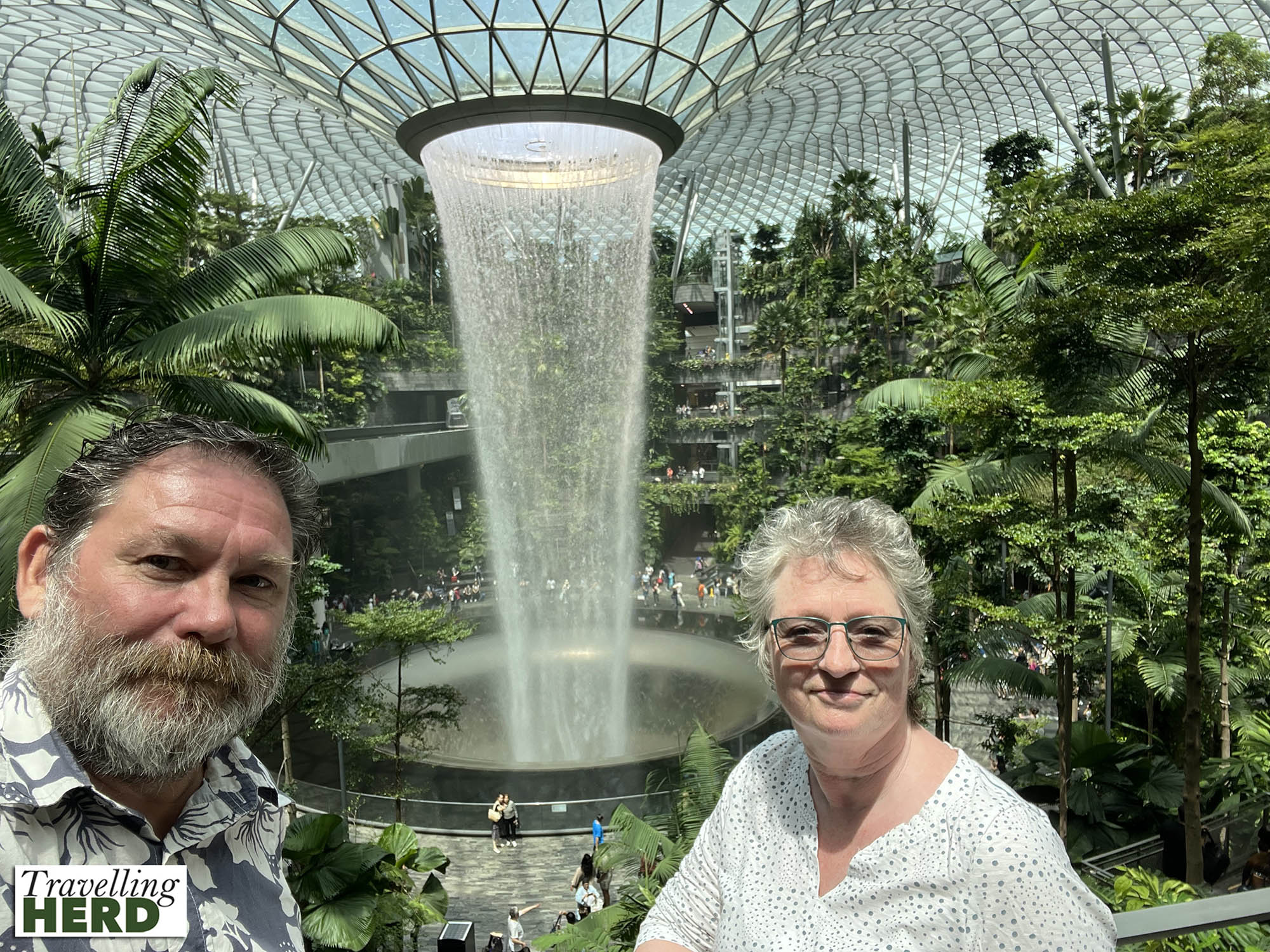
Dish of the day:
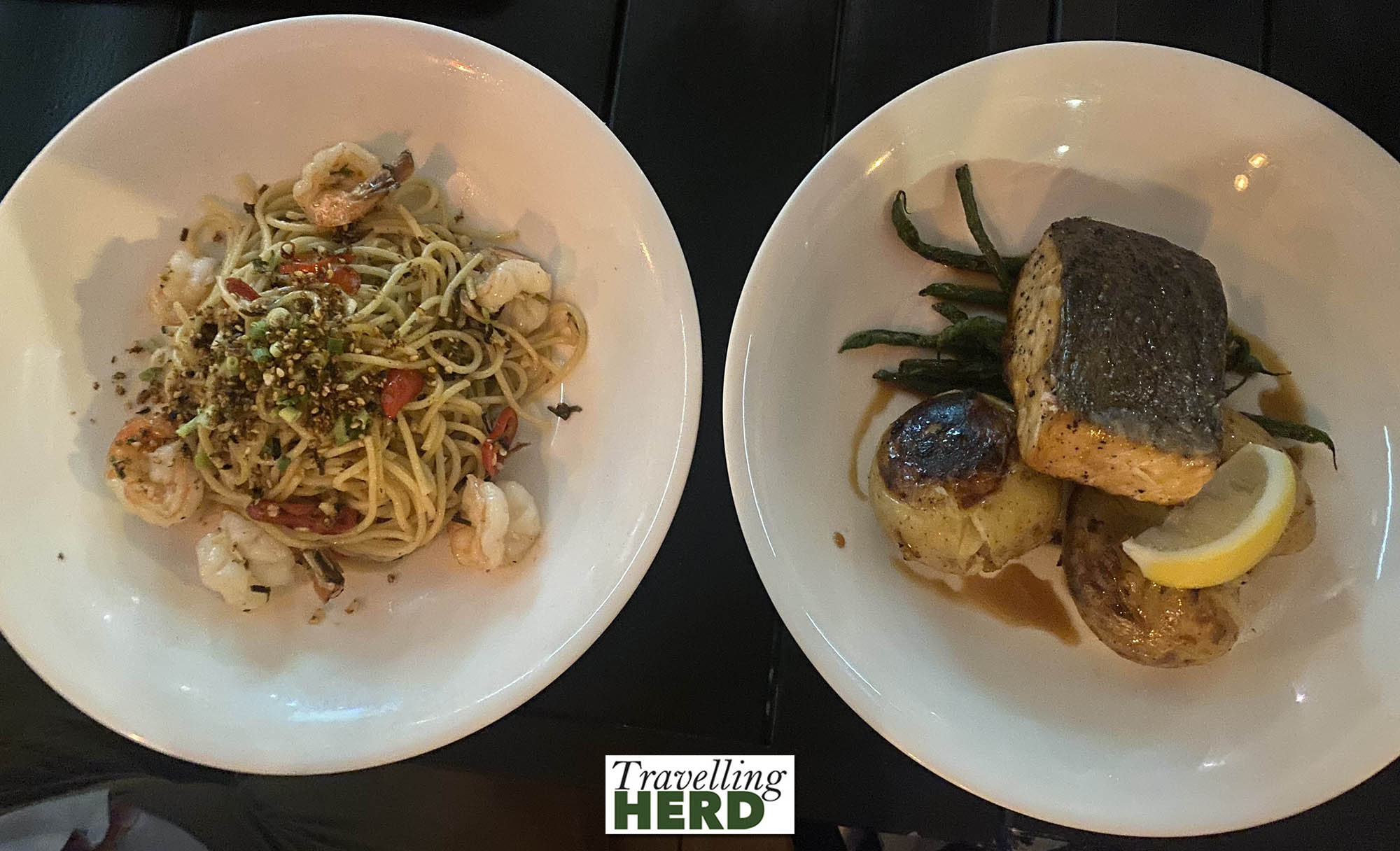
Route Map:
